hype cycle
description: graphical presentation of the maturity of specific technologies
58 results

Green Swans: The Coming Boom in Regenerative Capitalism
by
John Elkington
Published 6 Apr 2020
See also change process stages; Future-Fit change approach; technology allowing to flourish, 166 Anthropocenic route, taking, 230–234 antibiotics through lens of, 108 assets with characteristics of, 73 be a leader, not an algorithm, 223–230 Black Swans starting off as, 182 business models with characteristics of, 53 calories through lens of, 102 capitalism with characteristics of, 202–208 carbon economy through lens of, 111 defined, 9, 22, 167 democracy with characteristics of, 208–213 different thinking, need for, 23–27 early sharing of content about, 199–201 exponential leaders, 236–242 future, differing views of, 190–193 global grand challenges approach, 186–187 governance with characteristics of, 71 gradual, then sudden evolution of, 76 growth with characteristics of, 57–58 historical, 43 impact with characteristics of, 64 liability with characteristics of, 68 losing control, risk of, 193–197 materiality with characteristics of, 69–70 overview, 1–3, 22–23, 219–223 as parallel reality with Black Swans, 9–10 plastics through lens of, 97 profitability with characteristics of, 55 purpose with characteristics of, 50 push and pull in evolution of, 189–190 recent examples, 42 reinventing everything, 197–199 space junk through eyes of, 116 spotting, 254–256 sustainability with characteristics of, 213–218 systemic change overview, 201–202 three horizons, two scenarios, 2000-2100, 38–39 and triple bottom line concept, 12–13 U-bend, unclogging, 234–236 value with characteristics of, 61 Green Swans (film), 9–10, 248 Green Transition Scoreboard, 233 growth, 47, 55–58 The Guardian (newspaper), 96 H Haan, Nick, 200, 222 Hamid, Mohsin, 109, 110 Harvard Business Review (HBR), 32, 155–158 Haut, Sonja, 253 Hawken, Paul, 141, 142, 232 Hemingway, Ernest, 79 Hichens, Robert, 198–199 Hill-Landolt, Julian, 229–230 Hippocratic Oath, 108 Hoffman, Donald, 27 Hofstetter, Dominic, 220 Holocene epoch, 86 Honda, 135 horseshoe crabs, 231–232 How Adam Smith Can Change Your Life (Roberts), 80 The Human Planet (Lewis and Maslin), 29 Humanitarians, exponential leaders as, 238 humor, 120–121 Hunter, Sarah, 240 Hurd, Nick, 212–213 Hutton, Will, 196 Hwang Sang-ki, 126 Hyatt, John Wesley, 94 hydropower, 201 Hype Cycle, Gartner, 173–175 I Ibbitson, John, 222–223 Ignatius, Adi, 155–156 illusion of control, 44 impact, 47, 61–64, 256 impact investing, 63, 64 Impossible Foods, 233 incremental change, 34, 35f, 57, 233–234 India, 82 Indonesia, 220–221 industrial revolutions, 175–176 industry federations and associations, 132 inflated expectations, in Gartner Hype Cycle, 174 influencing activities, 145–146 information, role in economy, 190, 192 Innovation Trigger stage, Gartner Hype Cycle, 174 innovations, in three horizons framework, 38–39 Innovators, exponential leaders as, 238 Institute for Energy Economics and Financial Analysis, 242 Institute for Transformative Technologies (ITT), 184–185 insulin, 156–157 insurance industry, 136–137 intangible assets, 72 integrated business models, 52 Interface, 142 intergenerational transfer of wealth, 201 International Accounting Standards Board, 58 International Finance Corporation, 119 international OTA, need for, 183, 185 International Renewable Energy Agency (IRENA), 133 International Space Station (ISS), 111 internet, 173, 175, 192 Internet of Things (IoT), 177 investors/investing, 63, 64, 162, 205–208, 242–244 invisible hand, 18, 25, 85 Ipsos, 219 Israel, 171 Ive, Jony, 213–214 Iversen, Torben, 212 ivory, 93 J Jackson, Clive, 245–246 Jackson, Tim, 56 Jakarta, Indonesia, 220–221 Japan, 135 Johnson, Nicholas, 113 Johnson & Johnson, 13 Johnson County, Indiana, 126–127 joint and several liability, 66 Jørgensen, Lars Fruergaard, 158–159 journalists, 227 JPMorgan, 142–143 Just, Inc., 233 JWT, 140–141 K Kahneman, Daniel, 204 Kaiser Permanente, 255 Kelly, Kevin, 36 Kelly, Marjorie, 205 Kendall, Geoff, 159–164 Kerr, Andrew, 201 Kessler, Donald, 112 Kingston, Phil, 189 Klee, Louis, 109 Klimenko, Svetlana, 207–208 Kondratiev, Nikolai, 203 Kramer, Mark, 59 Kuhn, Thomas, 41, 121–122, 123, 191, 230 L Langer, Ellen, 44 Lawrence Berkeley National Lab, 184–185 Layton, David, 190–191 leaded gasoline, 172 leaders, 223–230, 236–242.
…
Before we consider how that might best be done, though, it is worth underscoring just how unusual the current moment is in technology’s evolution. RIDING HYPE CYCLES I have long been fascinated by technology, writing many books about it. I edited a newsletter, Biotechnology Bulletin, for fifteen years, enabling me to visit almost a hundred firms involved in genetic engineering in Europe, Japan, and North America during the peak of the first biotechnology boom. If I learned any one thing over that time, it is that new technologies trigger feeding frenzies that typically follow a standard arc like that visualized in the famous Gartner Hype Cycle. This, Gartner tells us, evolves through five main stages: 1.Innovation Trigger: At this point we see some form of breakthrough in a key technology, accompanied by one or more initial product launches, sparking growing media and public interest.
…
See also change process stages; Future-Fit change approach Paradise, California, 137 Patriotic Millionaires, 132 Peak of Inflated Expectations stage, Gartner Hype Cycle, 174 Pearl, Morris, 132 penicillin, 103–104 People, Planet & Profit (3Ps), 30, 54 Perez, Carlota, 203, 235 PG&E power utility, 137 pharmaceutical industry, 231–232 Phelan, Ryan, 231–232 philanthropy, misuse of, 13 Piketty, Thomas, 60 Pinker, Steven, 28 placebo buttons, 43–46, 54 Plan B work, 234 Planet Labs, 114, 115 plant-based meat, 233 Plastic: A Toxic Love Story (Freinkel), 92–93 A Plastic Ocean (film), 92 plastics, as wicked problem, 92–97 Plateau of Productivity stage, Gartner Hype Cycle, 175 Pliny the Elder, 39 politics. See also democracy activism in, 227–228 breakers in, 221 different thinking, need for, 23–27 in future, 224 future-fit, 163–164 with Green Swan characteristics, 208–213 and need for systemic change, 14–15 underperformance in, 128 Polman, Paul, 19, 131 Polos, Stephen, 215 polymers industry, 92–97 Pope Francis, 128 population decline, 210–211, 222–223 Porter, Michael, 59, 150, 150f Positive Pursuits element, Future-Fit approach, 163 The Power of Unreasonable People (Elkington and Hartigan), 11 precision medicine, 179 predatory delay, 67 “Pre-Science” stage, in paradigm shift, 121–122, 123 product liability, 66 professional media, 227 profit(s), 27, 30–33, 47, 53–55, 128–129 Project Breakthrough, 34–36 Project Drawdown, 141, 232 Prosperity (Mayer), 49–50 Prosperity without Growth (Jackson), 56 psychoanalyzing business terms.

Boom: Bubbles and the End of Stagnation
by
Byrne Hobart
and
Tobias Huber
Published 29 Oct 2024
Whereas the belief that “this time is different” has cost many investors their shirts—not for nothing is that phrase known as the four most dangerous words in investing—the future that followed Apollo did, in fact, turn out to be radically different from what came before. This time really was different. Support for Apollo traced the oscillating trajectory of a financial bubble—i.e., the hype cycle. Many unorthodox ideas are victimized and buoyed by hype cycles. An initial breakthrough triggers hype to a peak of inflated expectations, which subsequently collide with reality. In the case of Apollo, the hype cycle was defined by fluctuating public and political support. Initially, public support was essentially undivided thanks to Cold War fears and compelling arguments by President Johnson and NASA director James Webb, who persuaded lawmakers and citizens that a space program would generate both economic and scientific progress.
…
Combining a Generalised Metcalfe’s Law and the LPPLS Model,” Royal Society Open Science 6, no. 180538: 1–13; Tobias Huber and Didier Sornette, “Boom, Bust, and Bitcoin: Bitcoin-Bubbles as Innovation Accelerators,” Journal of Economic Issues 56, no. 1 (2022): 113–136. 314 On the mechanisms of bubbles and their growth rates, see Didier Sornette and Peter Cauwels, “Financial Bubbles: Mechanisms and Diagnostics,” Review of Behavioral Economics 2, no. 3 (2015): 279–305. 315 “Gartner Hype Cycle Research,” Gartner, https://www.gartner.co.uk/en/methodologies/gartner-hype-cycle. 316 Indicated, for example, by the US Securities and Exchange Commission’s approval of Bitcoin exchange-traded funds (ETFs) in January 2024, which made it easier for mainstream investors to buy into Bitcoin without having to own the cryptocurrency themselves. 317 Dhruv Bansal, “Bitcoin Data Science (Pt. 1): HODL Waves,” Unchained Capital, January 17, 2023, www.unchained-capital.com/blog/hodl-waves-1. 318 The expectation that a halving will result in an increase of hodlers, and therefore higher prices, assumes that Bitcoin’s value is driven by scarcity.
…
The interlocking positive spirals of technological development and economic expectation create a self-validating, imitation-driven social feedback loop that accelerates Bitcoin’s network effect. In this sense, Bitcoin is an archetypal bubble. The question, then, is whether it has already popped or continues to inflate. 311 As past bubbles have demonstrated, exploding prices generate interest and attention. The same phenomenon has occurred during Bitcoin’s hype cycles. Bitcoin’s extraordinary returns, and the ensuing media coverage and virality on social media, elicits FOMO as investors infer value from the profits others have accrued in the recent past. This leads to new waves of buyers, who accelerate price growth even more dramatically. The increase in speculation and adoption further stimulates the founding and financing of new Bitcoin-based or other cryptocurrency-related startups that attract more speculative adopters and incentivize more Bitcoin-related research and development.
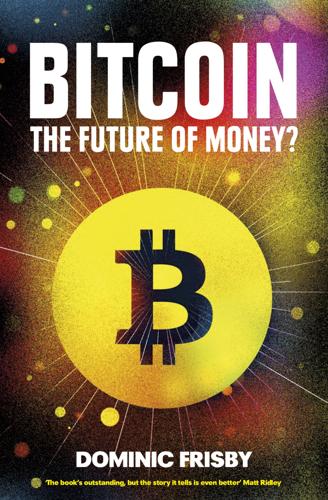
Bitcoin: The Future of Money?
by
Dominic Frisby
Published 1 Nov 2014
Only a handful of the companies and altcoins that have sprung up will make it, but those that do could dominate the space for many years to come, just as those few rail, car and dotcom companies that survived did. Beware of the hype cycle There is a cycle that a new technology passes through as it goes from conception to widespread adoption. The research company Gartner has dubbed it the ‘hype cycle’. It has five phases: the technology trigger, the peak of inflated expectations, the trough of disappointment, the slope of enlightenment and the plateau of productivity. In the first phase the new technology is invented.
…
A great deal of not particularly rewarding hard work, time and investment lies ahead. Forget the ideas men – now we need the water-carriers. Suddenly, the excitement has gone. Negative press starts to creep in. Now there are more sellers than buyers. Investment is harder to come by. Many companies start going bust. People are losing money. The hype cycle has reversed and we have descended into the ‘trough of disappointment.’ This was the internet between 2000 and 2003. But now that the hot money has left, we can move into phase four. The incompetent or fraudulent companies have died. The sector has been purged. Most of those that remain are serious players.
…
Investors now demand better practice and the survivors deliver it. They release the second and third generation products, and they work quite well. More and more people start to use the technology and it is finally finding mainstream adoption. This was the internet in 2004. It climbed the ‘Slope of Enlightenment’, the fourth phase of the hype cycle, and entered the ‘Plateau of Productivity’ – phase five – which is where the likes of Google, Amazon and eBay are today. Of course, cycles like this are arbitrary. Reality is never quite so simple. But it’s easy to make the case that crypto-currencies in late 2013 reached a ‘peak of inflated expectations’.

Geek Sublime: The Beauty of Code, the Code of Beauty
by
Vikram Chandra
Published 7 Nov 2013
“Household Data Annual Averages: Employed Persons by Detailed Occupation, Sex, Race, and Hispanic or Latino Ethnicity.” Bureau of Labor Statistics, United States Department of Labor, 2012. http://www.bls.gov/opub/ee/2013/cps/annavg11_2012.pdf. “How SQLite Is Tested.” Sqlite.org. Accessed February 3, 2013. http://www.sqlite.org/testing.html. “Hype Cycle Research Methodology.” Gartner.com. Accessed February 3, 2013. http://www.gartner.com/technology/research/methodologies/hype-cycle.jsp. “iGEM 2012 HS Is Officially Over!” Igem.org. Accessed February 3, 2013. http://2012hs.igem.org/Main_Page. “The IBM 650 Magnetic Drum Calculator.” Columbia University Computing History. Accessed August 27, 2013. http://www.columbia.edu/cu/computinghistory/650.html.
…
Institute Archives and Special Collections, MIT Libraries, Cambridge, MA Figure 5.1: Rules from the Ashtadhyayi (Vedic Literature Collection, Maharishi University of Management) Figure 6.1: Dependency diagram (TheDailyWTF, www.thedailywtf.com) Figure 6.2: “Hello, world!” in brainfuck Figure 6.3: “Hello, world!” in Malbolge Figure 6.4: Gartner, Inc.’s Hype Cycle (Jeremy Kemp, Wikimedia Commons) ACKNOWLEDGMENTS This project has been supported by the University of California, Berkeley. Thanks to Martin Howard for the images of the LEGO logic gates (http://www.randomwraith.com/logic.html); and to Alex Papadimoulis of TheDailyWTF.com for the dependency diagram.
…
A naive outsider might wonder if the quality of a language matters a little, just a teeny bit at least, but in the real world fashion trumps all.19 In respect to programming languages and techniques, the programming industry has now been through many cycles of faith and disillusionment, and many of its members have acquired a sharp, necessary cynicism. “Hype Cycle”—a phrase coined by the analysts at Gartner, Inc.—adroitly captures the up-and-down fortunes of many a tech fad. 20 The tools and processes used to manage all this complexity engender another layer of complexity. All but the simplest programs must be written by teams of programmers, each working on a small portion of the system.
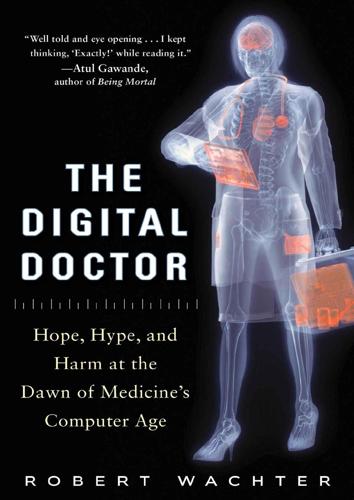
The Digital Doctor: Hope, Hype, and Harm at the Dawn of Medicine’s Computer Age
by
Robert Wachter
Published 7 Apr 2015
David, “The Dynamo and the Computer: An Historical Perspective on the Modern Productivity Paradox,” American Economic Review Papers and Proceedings 1:355–361 (1990). 246 Robert Wah … told me what happened Interview of Wah by the author, August 4, 2014. 246 In 1995, the consulting group Gartner coined Gartner Hype Cycle, available at http://www.gartner.com/technology/research/methodologies/hype-cycle.jsp. 247 One widely cited 2005 RAND study R. Hillestad, J. Bigelow, A. Bower, et al., “Can Electronic Medical Record Systems Transform Health Care? Potential Health Benefits, Savings, and Costs,” Health Affairs 24:1103–1117 (2005). 247 Bob Kocher, the Obama advisor Interview of Kocher by the author, June 19, 2014. 247 President-elect Obama, who, in a January 2009 speech, declared Remarks of President-elect Barack Obama, January 8, 2009, available at http://change.gov/newsroom/entry/presidentelect_obama_speaks_on_the_need_for_urgent_action_on_an_american_r/. 247 In 2014 … another RAND team reviewed the literature S.
…
“The receptionist checked the patient in electronically, and then turned around and put a chart-sized piece of cardboard in the chart rack. That’s how wedded we are to our paper-based processes.” Appreciating the need to address work flow and culture does not get kludgy technology off the hook. In 1995, the consulting group Gartner coined the term Hype Cycle to describe the trajectory of many technologies. The cycle commences with the introduction of a new technology. Then the hype begins, with a “peak of inflated expectations” preceding a swift descent into the dreaded “trough of disillusionment.” Some technologies die there; the ones destined to be successful climb the “slope of enlightenment” to reach their final stage: a “plateau of productivity.”
…
Part of what is so impressive about the modern generation of consumer-directed IT tools— Google search, the iPhone and iPad, Facebook—is that they moved through the stages so rapidly, with barely any trough. Could it be that technology designers have become so skilled that, in today’s world, the Hype Cycle is either avoided or markedly foreshortened? Perhaps, but not in healthcare. Part of the hype in health IT was that we’d save boatloads of cash. This was a particularly attractive selling point for EHRs, since healthcare now consumes nearly one in five U.S. dollars, leading to a widespread consensus that if we don’t get healthcare costs under control, they will smother the rest of the economy.

Bold: How to Go Big, Create Wealth and Impact the World
by
Peter H. Diamandis
and
Steven Kotler
Published 3 Feb 2015
Back in the late 1960s, when folks like writer Stewart Brand (who coined the term personal computer) first started discussing the idea of the PC, it was with an incredible amount of “change the world” fervor.3 Then the machines actually arrived, and all most people could do was play Pong. This was the trough of disillusionment, cultural deception at its finest. But imagine being able to take your knowledge of what computers can do today back to the early 1980s—what bold entrepreneurial business opportunities might this have unlocked for you? Hype Cycle Indicators Gartner Hype Cycle Indicators Source: www.gartner.com Recognizing when a technology is exiting the trough of disillusionment and beginning to rise up the slope of enlightenment is critical for entrepreneurs. Reading an exponential curve like a road map, experts watch for a number of indicators—the development of best practices, supplier proliferation, secondary financings, among others.
…
Thus each of these technologies hover on the verge of widespread adoption, and for those exponential entrepreneurs able to stay ahead of this curve, the opportunities are considerable. The Hype Curve and the User Interface If we want to stay ahead of this curve, it helps to understand a little more about the nature of exponential deception. That starts with understanding the powerful biases that inform the Gartner Hype Cycle (see below). After a novel technology is introduced and begins gaining momentum, we tend to envision it in its final form—seriously overinflating our expectations for both its developmental timetable and its short-term potential. Invariably, when these technologies fail to live up to the initial hype—usually in that gap between deception and disruption on our list of the Six Ds—public sentiment for the technology falls into the trough of disillusionment.
…
Shaw, 129 Devitt, Scott, 132–33 Diamandis, Peter H., 202, 278, 279, 286n Digital Apparel, 61 digital cameras, 6–7, 9, 10, 12, 12, 14, 76 first model of, 4–5, 5, 9 digitalization, 8–9, 8, 10, 20 of books, 154–55 of synthetic biology, 63, 64 digital manufacturing, 33 discovery-based insights, 160, 161–62 disruption, exponential, 8, 8, 9–10, 20, 24, 25, 29, 32, 39, 41, 59, 60, 256 robotics potential for, 60, 61–62 of synthetic biology, 63–65 3–D printing’s impact of, 33–35, 37, 38, 39 DIY communities, 215–16, 219, 227, 233, 239, 241, 243 case studies of, 219–25 definition of, 215 massively transformative purpose (MTP) in, 215, 221, 230, 231, 233, 240, 242 reasons for building of, 228–29 wrong reasons for building of, 229–30 see also communities, online DIY Drones, 216–17, 229, 232, 242 DNA, 63, 64, 65 Doctorow, Cory, 38 Dogpatch, Ky., 71 doll industry, 38–39 donation funding, 172, 173 Doukas, Charalampos, 43 Downey, Robert, Jr., 117 Dragon capsules, 34, 97, 119 Drive (Pink), 79 drones, 14, 44, 61, 133, 275 dual-use crowdsourcing, 154–56 Dunn, Jason, 35–36, 37 Duolingo, 155–56 DuPont, 72 D-Wave Systems, 58, 59 Eastman, George, 3–4, 15 Eastman Dry Plate Company, 4 Eastman Kodak Company, see Kodak Corporation eBay, 118, 218 “e-discovery” software, 56 Elastec/American Marine team, 252 electric cars, 119 Ellenberg, Jordan, 255 Ellucian, 258 Engadget (blog), 177, 206 engagement strategies: in crowdfunding campaigns, 203–6, 207 early donor, 203–5 incentive competitions as, see incentive competitions for media attention, 205–6 in online communities, 224, 227, 235, 236–38, 239, 241 rating systems as, 226, 232, 236–37, 240 entitlement problem, 237 Entrepreneur, 62 entrepreneurs, exponential, xi, xii–xiv, 15, 17, 21–22, 24, 28, 41, 66–67, 73, 115–16, 123, 169, 231, 243, 274, 278 AI and, 54, 56–59 birthing projects above line of super-credibility and, 96, 98–99, 98, 100, 101–2, 107, 190, 199, 203, 266, 272 building online communities for, see communities, online choosing technology for development by, see technology, exponential crowd tools of, see crowdfunding, crowdfunding campaigns; crowdsourcing; incentive competitions incentive prizes as tools of, see incentive competitions infinite computing and, 50–52 networks and sensors trend and, 43, 47–48 passion as important in, 106–7, 119–20, 122, 125, 134, 174, 183, 184, 228 psychological tools for, see psychological tools, of entrepreneurs risk management and, 76–77, 82, 83, 84, 86, 87, 88, 92, 93, 103, 109, 121–22, 126–27, 137, 261, 270 robotics and, 60, 61, 62 solving problems as business opportunities for, xii thinking at scale and, see scale, thinking at in 3–D printing, 35–39 see also specific entrepreneurs and companies equity funding, 172, 173–74 European Space Agency (ESA), 102 experts, in crowdfunding campaigns, 193 exponential communities, xiii, 148, 182, 219, 233 case study of, 225–28 definition of, 215–16 DIY vs., 215–16 see also communities, online exponential growth curve, x, 6, 7, 9, 12, 12, 36, 37, 41, 54, 59 of biotechnology, 64 linear vs., 7, 9 Six Ds of, see Six Ds of Exponentials exponential organizations, 15–17, 18–21, 22 crowd tools of, see crowdfunding, crowdfunding campaigns; crowdsourcing; incentive competitions definition of, 15 linear vs., 15, 17, 18, 19, 20, 21 structure of, 21 see also entrepreneurs, exponential; specific exponential entrepreneurs and organizations Exponential Organizations (ExO) (Ismail), xiv, 15 extrinsic rewards, 78, 79 Exxon Valdez, 250 FAA (Federal Aviation Administration), 110, 111, 261 Facebook, 14, 16, 88, 128, 173, 182, 185, 190, 195, 196, 202, 212, 213, 217, 218, 224, 233, 234, 236, 241 facial recognition software, 58 Fairchild Semiconductor, 4 Falcon launchers, 97, 119, 122, 123 false wins, 268, 269, 271 Fast Company, 5, 248 Favreau, Jon, 117 feedback, feedback loops, 28, 77, 83, 84, 120, 176, 180 in crowdfunding campaigns, 176, 180, 182, 185, 190, 199, 200, 202, 209–10 triggering flow with, 86, 87, 90–91, 92 Festo, 61 FeverBee (blog), 233 Feynman, Richard, 268, 271 Firefox Web browser, 11 first principles, 116, 120–21, 122, 126 Fiverr, 157 fixed-funding campaigns, 185–86, 206 “flash prizes,” 250 Flickr, 14 flow, 85–94, 109, 278 creative triggers of, 87, 93 definition of, 86 environmental triggers of, 87, 88–89 psychological triggers of, 87, 89–91, 92 social triggers of, 87, 91–93 Flow Genome Project, xiii, 87, 278 Foldit, 145 Forbes, 125 Ford, Henry, 33, 112–13 Fortune, 123 Fossil Wrist Net, 176 Foster, Richard, 14–15 Foundations (Rose), 120 Fowler, Emily, 299n Foxconn, 62 Free (Anderson), 10–11 Freelancer.com, 149–51, 156, 158, 163, 165, 195, 207 Friedman, Thomas, 150–51 Galaxy Zoo, 220–21, 228 Gartner Hype Cycle, 25–26, 25, 26, 29 Gates, Bill, 23, 53 GEICO, 227 General Electric (GE), 43, 225 General Mills, 145 Gengo.com, 145 Genius, 161 genomics, x, 63, 64–65, 66, 227 Georgia Tech, 197 geostationary satellite, 100 Germany, 55 Get a Freelancer (website), 149 Gigwalk, 159 Giovannitti, Fred, 253 Gmail, 77, 138, 163 goals, goal setting, 74–75, 78, 79, 80, 82–83, 84, 85, 87, 137 in crowdfunding campaigns, 185–87, 191 moonshots in, 81–83, 93, 98, 103, 104, 110, 245, 248 subgoals in, 103–4, 112 triggering flow with, 89–90, 92, 93 Godin, Seth, 239–40 Google, 11, 14, 47, 50, 61, 77, 80, 99, 128, 134, 135–39, 167, 195, 208, 251, 286n artificial intelligence development at, 24, 53, 58, 81, 138–39 autonomous cars of, 43–44, 44, 136, 137 eight innovation principles of, 84–85 robotics at, 139 skunk methodology used at, 81–84 thinking-at-scale strategies at, 136–38 Google Docs, 11 Google Glass, 58 Google Hangouts, 193, 202 Google Lunar XPRIZE, 139, 249 Googleplex, 134 Google+, 185, 190, 202 GoogleX, 81, 82, 83, 139 Google Zeitgeist, 136 Gossamer Condor, 263 Gou, Terry, 62 graphic designers, in crowdfunding campaigns, 193 Green, Hank, 180, 200 Grepper, Ryan, 210, 211–13 Grishin, Dmitry, 62 Grishin Robotics, 62 group flow, 91–93 Gulf Coast oil spill (2010), 250, 251, 253 Gulf of Mexico, 250, 251 hackathons, 159 hacker spaces, 62, 64 Hagel, John, III, 86, 106–7 HAL (fictional AI system), 52, 53 Hallowell, Ned, 88 Hariri, Robert, 65, 66 Harrison, John, 245, 247, 267 Hawking, Stephen, 110–12 Hawley, Todd, 100, 103, 104, 107, 114n Hayabusa mission, 97 health care, x, 245 AI’s impact on, 57, 276 behavior tracking in, 47 crowdsourcing projects in, 227, 253 medical manufacturing in, 34–35 robotics in, 62 3–D printing’s impact on, 34–35 Heath, Dan and Chip, 248 Heinlein, Robert, 114n Hendy, Barry, 12 Hendy’s law, 12 HeroX, 257–58, 262, 263, 265, 267, 269, 299n Hessel, Andrew, 63, 64 Hinton, Geoffrey, 58 Hoffman, Reid, 77, 231 Hollywood, 151–52 hosting platforms, 20–21 Howard, Jeremy, 54 Howe, Jeff, 144 Hseih, Tony, 80 Hughes, Jack, 152, 225–27, 254 Hull, Charles, 29–30, 32 Human Longevity, Inc.
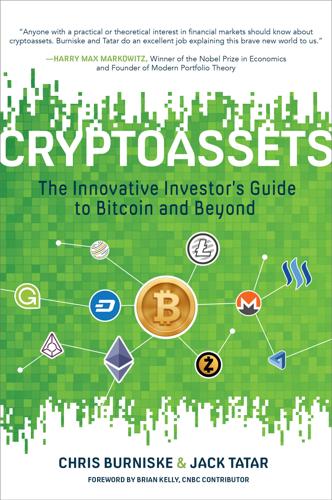
Cryptoassets: The Innovative Investor's Guide to Bitcoin and Beyond: The Innovative Investor's Guide to Bitcoin and Beyond
by
Chris Burniske
and
Jack Tatar
Published 19 Oct 2017
The realm of public blockchains and their native assets is most relevant to the innovative investor, as private blockchains have not yielded an entirely new asset class that is investable to the public. WHERE IS BLOCKCHAIN TECHNOLOGY IN THE HYPE CYCLE? By now it will be clear to the innovative investor that the blockchain technology space is still working itself out and will continue to do so for years to come. Captivating technologies have a gravitational pull that brings in new minds with varied perspectives and that will push the boundaries of the technology. The progression of a new technology, and the way it evolves as it gains mental mindshare, is at the core of Gartner’s Hype Cycle for Emerging Technologies (Gartner is a leading technology research and advisory firm),17 which displays five common stages of technology.18 • Innovation Trigger • Peak of Inflated Expectations • Trough of Disillusionment • Slope of Enlightenment • Plateau of Productivity First is the Innovation Trigger that brings the technology into the world.
…
When enough people have given up, but the loyal keep working in dedication, the technology begins to rise again, this time not with the irrational exuberance of its early years, but instead with a sustained release of improvements and productivity. Over time the technology matures, ultimately becoming a steady platform in the Plateau of Productivity that provides a base on which to build other technologies. While it’s hard to predict where blockchain technology currently falls on Gartner’s Hype Cycle (these things are always easier in retrospect), we would posit that Bitcoin is emerging from the Trough of Disillusionment. At the same time, blockchain technology stripped of native assets (private blockchain) is descending from the Peak of Inflated Expectations, which it reached in the summer of 2016 just before The DAO hack occurred (which we will discuss in detail in Chapter 5).
…
The computers are not technically miners because they are not minting any new assets and they are not paid directly for their work. 16. http://www.nyu.edu/econ/user/jovanovi/JovRousseauGPT.pdf. 17. http://www.gartner.com/newsroom/id/3412017. 18. http://www.gartner.com/technology/research/methodologies/hype-cycle.jsp. Chapter 4 1. Network value = (units of the asset outstanding) × ($ value per asset). This is often referred to as the market capitalization of an asset on many current resources, but the authors prefer this term as more accurately conveying the total value of a cryptoasset. 2. https://coinmarketcap.com/. 3. http://cryptome.org/jya/digicrash.htm. 4.

Infonomics: How to Monetize, Manage, and Measure Information as an Asset for Competitive Advantage
by
Douglas B. Laney
Published 4 Sep 2017
(ref: “Applied Infonomics: Designing for Optimal Marginal Utility in a Digital World,” Douglas Laney, Dale Kutnick and Saul Brand, Gartner, 16 December 2016, www.gartner.com/document/3546617). 5 Douglas Laney, and Michael Smith, “How CIOs and CDOs Can Use Infonomics to Identify, Justify and Fund Initiatives,” Gartner, 29 March 2016, www.gartner.com/document/3267517. 6 The standard yield curve plots the yields or interest rates for bonds or other debt instruments of differing contract or maturity lengths. 7 “Gartner Hype Cycle: Interpreting the Hype,” Gartner, accessed 09 February 2017, www.gartner.com/technology/research/methodologies/hype-cycle.jsp. 8 Douglas Laney, and Michael Patrick Moran, “Toolkit: Enterprise Information Management Maturity Self-Assessment,” Gartner, 13 June 2016, www.gartner.com/document/3344417. Chapter 13 Infonomics Trends There’s no doubt that infonomics as a concept and a set of disciplines is in its infancy.
…
Index 3 “V”s of big data 101n9 Abe’s Market 39 accessibility 249 accounting: accountants and information 227–9; cashing in on information 229; information 201–5; probable economic value 229–30 ACNielsen 12, 22 Acxiom 229 Adams, Paul 168 Advanced Drain Systems (ADS) 97 Affordable Care Act (Obamacare) 98 Albala, Mark 261 algorithm(s) 84, 88–9, 94, 96, 98, 137, 199, 230–1, 279, 286, 289–91 Amazon 36, 132, 211, 217n2 American Institute of Certified Public Accountants (AICPA) 21, 205–6 analytics: actionable decision-making 89–93; advanced 289–90; advanced analytics advantage 83–5; business intelligence implementation 82; descriptive 82–3; diagnostic 82–3; exploiting Big Data 86–9; Gartner analytic ascendency model 83; identifying monetizable insights 93–9; information management 99–100; information monetization 75–6; predictive 82–3; prescriptive 82–3; value 266 application program interfaces (APIs) 34, 73 applied asset management: governance 186–9; information strategy 177–81; information vision 174–7; infrastructure 196–8; metrics 182–6; people 189–92; process 193–6; roles for infosavvy organization 198–200 Aquatics Informatics 114 Archer Daniels Midland 8 Armstrong, Neil 1 Arthur Andersen 205, 217 artificial intelligence (AI) 85, 90, 115, 286, 289–90 Art of War, The (Sun Tzu) 144n4 asset, definitions 2–3, 9–11, 214–15 asset management: barriers to information 114–16; fiduciary responsibility 164; financial methods 163–5; intangibles 168–9; lessons from sustainability 138–43; see also applied asset management; physical asset management AULIVE 12 Australian Computer Society Data Taskforce 222 Australian Privacy Commissioner 233 Automated Teller Machines (ATMs) 43–4 Auto Trader 23 Ayasdi 14, 27n6, 42, 98 balance sheet assets 158–9; physical asset management 9, 116, 158–63, 176, 184, 188–9, 198, 235 Bardin, Noam 35 bartering: favorable terms and conditions 38–9; goods and services 37–8; relationships 38–9 Becker, Gary 128 Becker, Mark 30 Beechcraft Cessna 292 Beechwood House Publishing 255–6 Bekenstein Bounds 273 Bell Helicopter 292 Bespoke Data Organisation 225 Beyer, Mark 186 Big Data 10, 12, 26n2, 49n1, 59, 212; exploiting 85–9; health insurance company 107; information trend 287; processing 40–1; roadblocks to information monetization 287–8; term 86, 101n8; variety of information 88–9; velocity of information 85–6; volume of information 87 biodiversity 136 Bippert, Doug 84 Birchler, Urs 272 blockchain 291 Bloomberg 12, 211, 229 blunderfunding 244, 268n5 Boone, Ryan 40 Box, George 246 BrightPlanet 65 Brownstein, John 96 Brynjolfsson, Erik 272 Brzmialkiewics, Caryl 44 Buchanan, Stewart 107 Bugajski, Joe 281 business: asset 10; climate 136; information 48–9; introducing a new line of 33–4; models 24–6; performance 43–4 business intelligence (BI) 14, 77, 81, 198, 211, 292; analytics 82; beyond basic 81–6; innovation 97–9; see also analytics business-to-business (B2B) 15, 38 business-to-consumer (B2C) 15 business value of information (BVI) 253–4 Bütler, Monka 272 Buytendijk, Frank 34, 281 Caltex 63 Capability Maturity Model Integration (CMMI) 148 cash 14–16, 20–1, 28, 35, 37, 39, 42–4, 96, 128, 161, 165, 188, 209, 227, 229, 257, 260, 293 Casonato, Regina 132 Casper, Carsten 244 Center for Disease Control 65; Youth Risk Behavior Surveillance System (YRBSS) 89 chief data officer (CDO) 3, 9, 17, 25: analytics 106–7; balancing act of 288–9; concept of 190; emergence of 293; hiring 211; information ecosystem 138; information leader 56–6, 155; information management 154; leadership 112; role of 192, 199–200 chief financial officer (CFO) 3, 100, 105, 107, 165, 200, 213, 245, 250 chief executive officer (CEO) 15, 32, 34, 40, 57, 100, 112, 155, 168, 175, 190, 200 chief information officer (CIO) 3, 40, 42, 58–9, 81, 106, 112, 132, 134, 175–6, 190, 200 China 35, 64, 159, 224 Christiaens, Stan 106 Cicero Group 148, 265, 269n25 Citigroup13–14, 16 Clark, Christina 243 Coca-Cola 83–4, 88, 132 Cohen, Jack 91 Coles Supermarkets 192 Collibra 106, 163 commercial data 63 commercial general liability (CGL) 241–2 competitive differentiation 36–7 completeness 248, 252 Comprehensive Capital Analysis and Review (CCAR) 14 Connotate Software 62, 65 consistency 248 content management, contending approaches for 154–5 Corbin, Stacey 63 Cordner, Matt 292 costs, defraying information management and analytics 40–1 cost savings, monetization success 74 cost value of information (CVI) 256–7, 261–2, 274–5 cultural attitudes, information management 114 customer acquisition and retention 29–31 customer relationship management (CRM) 140 D&B 22, 57, 63–4, 229 DalleMule, Leandro 176, 184 dark data 32, 42, 62–3, 141; information asset 61–2; understanding 94–5 data as a service (DAAS) 181–2 database management system (DBMS) 134, 302 Data Driven Leaders Always Win (Zaidi) 234 data governance 188–9; see also governance, information Data Management Association International (DAMA) 148 data ownership 20; see also ownership data preparation 17, 73–4, 189; for monetization use 72–3 data quality: assessing 246–9; objective metrics 248; subjective metrics 249 Data Republic 63 data science 289–90 Datateam Business Media (DBM) 221 Davis, Lord Justice 221 DB2 database 115, 228 DBS Bank 43–4 decision making: actionable 85, 89–93; complexity, activity and change 89–90; governance, risk and compliance (GRC) 91–2; optimizing business processes 90–1; scenario planning 92–3 deinformationalization 36 Deming, Edward 243 derivative data 279 Desai, Samir 58 Deutsche Telekom 225 Dibble, Bill 94 differential data 278 digerati 210 digital detritus 42 digital industry, intellectual property of 288 diminishing marginal utility 276–8; law of 276 Direct Eats 39 direct information monetization 66–8 Disney World 83 distinct data 278 diversity, people 191–2 Dollar General 32, 36, 40 Dominick, Lauren 92 Drucker, Peter 243 DSCI 63 Dun & Bradstreet see D&B Duncan, Alan 160, 272 economic attribution, monetization success 74 economics: applying concepts to information 272–3; as dismal science 271; principles 271–2; see also infonomics economic value of information (EVI) 258–9, 266 economy 11, 147, 192, 205–6, 217, 242, 272 ecosystem: definition 132–3; entities 135–6; features 136; influences 137; management 137–8; processes 136–7; sustainability principles 138–43, 180; see also information ecosystem Ehlers, Brian 183 elasticity, information pricing and 275–6 Electronic Communications Privacy Act of 1986 224 endowment effect 279 enterprise architect 10 enterprise asset management (EAM): infrastructure 197–8; systems 162 enterprise content management (ECM) 154, 181 Enterprise Data Management (EDM) Council 148 enterprise information management (EIM): impediments to maturity 111–14; leadership issues 112; levels of maturity 109–11; maturity model 108–11, 174; metrics 182–4; vision 174–7 enterprise resource planning (ERP) 140 Equifax 12, 57, 63 Equinox Fitness Clubs 58 Evans, Nina 114 Everedge 168 existence 249 exogenous information 16, 165; see also external information Experian 57, 63, 213 Experience Matters 106, 114, 148, 181, 186 external information 11, 31, 36, 55, 60–1, 165, 195, 292 Facebook 11, 21–2, 31, 34, 64, 211–13, 218n10, 232 faint signals, identifying 95–6 feasibility checklist 69–70; economical 72; ethical 72–3; legal 72; manageable 71; marketable 71; practical 70–1; scalable 71; technological 71 Federal Aviation Administration (FAA) 46 fiduciary 164, 189, 234 Financial Accounting Standards Board (FASB) 21, 206 financial valuation models, information assets 251, 255–61 Fisher, Jennifer 260 Fisher, Tony 272 Fisher, William W., III 169 FleetRisk Advisors 92 Francis, James C., IV 224 fraud and risk, identifying and reducing 44–5 Freedom of Information Act (FOIA) 17, 45–6 Friedman, Milton 128–9 Friedman, Ted 247, 268n12 fundamental valuation models, information assets 251–5 Gaia hypothesis 144n5 Ganschow, Karen 54 Gartner: enterprise information management (EIM) maturity model 108–11, 297–302; financial valuation models 251, 255–6; fundamental valuation models 251–5; Hype Cycle 281, 284n7; information asset valuation models 250; information value models 262; Magic Quadrants 68 Geis, Alex 33 General Data Protection Regulations (GDPR) 240n24 generally accepted accounting principles (GAAP) 21, 116, 217, 245 generally accepted information principles 116–19, 120n13; assumptions 117; constraints 117–18; principles 118–19 Georgia Aquarium 29–30 geographic 18, 35, 96, 235 Gledhill, David 43 goods and services, bartering 37–8 Google 11, 21, 47, 76, 211, 213, 217n2 governance: applied asset management 188–9; challenges and remedies 187; data entry 187; governance, risk and compliance (GRC) 91–2, 152; information 188, 234; information management 186–9; information management challenges 299–300; proving benefits of information 264 government 9, 17, 22–3, 41, 45–8, 61, 64, 95–6, 105, 115, 193, 206, 223–5, 237, 276, 286 Grayson-Rizzuto, Kimberly 39 Grossman, Larry 46 Hadoop 41 Hamilton, Stuart 114 Hawthorne effect 243, 268n4 Hawthorne Works 243 Health and Human Services Department 44 HealthMap 95–6 HERE Life 38 Hershberger, John 111 Higgins, Mike 97 Hillard, Rob 148, 272 Hogan, Tom 107 Holloway, Todd 32 Horrisberger, Jim 83 House of Cards (TV series) 59 Hubbard, Douglas 260 Human Capital (Becker) 128 human capital management 165–8, 184 Hutton, James 144n7 Hype Cycle 281, 284n7 IBM 87, 91, 115, 148 IMDB 34 Indigenous Land Corporation 63 indirect information monetization 68–9 industry average 283 Infinity Property and Casualty 94 infodiversity 180 infonomics 272, 285–6; concept of 3; definition 9; future of 292–5; improving information yield 281–4; information pricing and elasticity 275–6; information-related trends 286–91; managing information 106; marginal utility of information 276–9; opportunity cost for information choices 279–80; production possibilities of information 280; supply and demand of information 274–5 Informatica 163 information: accountants and 227–30; accounting for 214–17; as asset 2, 205–7; asset realization 207–8; business models and profitability 24–6; characteristics of 18–26; control of 228–9, 233; data vs 25–6, 26n4; digitalization of 288; economic alternatives for 13–14; getting more than cash for 14–16; as liability 216; liquidity of 20–1; monetizing, managing and measuring 9–11; multimedia 2; opportunity cost for information 279–80; pricing elasticity 275–6; probable economic value of 229–30; real world evidence of economic value of 210–13; replicability 23; reusable nature of 19; as second language 143–4; stop giving it away 18; supply and demand of 274–5; taxing situation 21–2; thinking beyond 16–17; transferability 23–4; uncovering hidden treasures 17–18; value of 208–10; see also ownership Information Age 3, 95, 136, 149, 160, 216 informationalize 36 informationalized product 75 information as a second language (ISL) 143–4, 192 information asset management (IAM) 107, 176; information yield 281–4; unified approach to 169–70; vision 176–7; see also applied asset management information assets 59–66; commercial data 63; commercial general liability (CGL) 241; dark data 62–3; financial valuation models 249, 255–60; fundamental valuation models 251–6; inventory 60; measuring 242–6; new supply chain model for 128–31; operational data 61; privacy and security 291; public data 64; social media data 64–5; valuation models 249–60; web content 65–6 information curation 17 information ecosystem: classic ecosystem entities concepts 135; ecosystem entities 135; ecosystem features of 136; ecosystem influences 137; ecosystem management 137–8; ecosystem processes 136–7; lessons from sustainability 138–43; preparing for 131–8; recycle 142–3; reduce 140–1; refuse 139–40; remove 143; repurpose 141–2; reuse 141; role of information in 133–5 information keiretsus 132 information lifecycle: expense 267; process challenges 301–2 information management 105–8; barriers to asset management 114–16; challenges and principles 119; cultural attitudes about 114; future of infonomics 292; generally accepted information principles 116–19; governance challenges 299–300; impediments to maturity 111–14; information metrics challenges 299; infrastructure challenges 302; leadership 112; levels of information maturity 109–11; maturity model 108–11, 174; monetization success 74; monetization to 99–100; people-related challenges 300–1; priority control 113–14; process challenges 301–2; resources 113–14; strategy challenges 298; vision challenges 297–8 information measurement, future of infonomics 294–5 information owners 222; see also ownership information ownership 222, 226–8, 232–4 information performance gap 262 information product management 56–9 information property rights 303–5; rulings affirming 303–4; rulings denying 304–5; see also information ownership; ownership information security 244 information supply chain (ISC) 8, 119; activities 131; metrics for 126–7; model for information assets 128–31; preparing for information ecosystem 131–8; scenarios 126; SCOR (Supply Chain Operations Reference) model 124–5; see also information ecosystem Information Technology Infrastructure Library (ITIL) 151–2 information valuation models 263–7; benefits of information governance 264; expanded revenue 266; innovation and digitalization 265; monetization and analytics 265–6; prioritizing IAM investments 264; reducing information lifecycle expense 267 information vision gap 262 information yield 281–4; concept 281; curve 281 infosavvy 3, 11; chief data officer (CDO) 199–200; growing market valuations 245; investors prizing, companies 211–13; roles for organization 198–200 infrastructure 12, 40–1, 47, 108, 139, 150–1, 192, 196–8, 267, 286, 290–1, 299, 302; information 290–1; information management 196; information management challenges 302 innovation 3, 26, 31, 46, 76, 97–9, 107, 113, 161, 236, 246, 265, 287, 289, 298, 301 innovation and digitalization, value 265 Instagram 34 Institute of Electrical and Electronics Engineers (IEEE) 147 intangible assets 168–9 integrity 248 intellectual property (IP) 62, 116, 128, 130, 168, 176, 181, 230–1, 288 International Accounting Standards Board (IASB) 214 International Accounting Standards (IAS) 214–15, 217 International Astronomical Union 148 International Federation of Library Association and Institutions (IFLA) 157 International Financial Reporting Standards (IFRS) 214–15; criteria 219n19 International Organization for Standardization (ISO): ISO 8000 170n2; ISO 15489–1:2016 152, 170n8, 171n10; ISO 19770–1 149; ISO 19770–2 149; ISO 19770–3 150; ISO 19770–4 150; ISO 30300:2011 170n9; ISO 55001 158; ISO/IEC 20000 170n7; ISO/IEC 27001 147, 170n3; IT asset management (ITAM) 149–50; IT service management (ITSM) 150–1 intrinsic value of information (IVI) 251–2 Intuit’s TurboTax 36 inventory, information asset 60 investor awareness, monetization success 76 IT asset management (ITAM): International Organization for Standardization (ISO) standards 149–50 IT service management (ITSM) 150–1; information strategy 180–1 J.D.
…
Index 3 “V”s of big data 101n9 Abe’s Market 39 accessibility 249 accounting: accountants and information 227–9; cashing in on information 229; information 201–5; probable economic value 229–30 ACNielsen 12, 22 Acxiom 229 Adams, Paul 168 Advanced Drain Systems (ADS) 97 Affordable Care Act (Obamacare) 98 Albala, Mark 261 algorithm(s) 84, 88–9, 94, 96, 98, 137, 199, 230–1, 279, 286, 289–91 Amazon 36, 132, 211, 217n2 American Institute of Certified Public Accountants (AICPA) 21, 205–6 analytics: actionable decision-making 89–93; advanced 289–90; advanced analytics advantage 83–5; business intelligence implementation 82; descriptive 82–3; diagnostic 82–3; exploiting Big Data 86–9; Gartner analytic ascendency model 83; identifying monetizable insights 93–9; information management 99–100; information monetization 75–6; predictive 82–3; prescriptive 82–3; value 266 application program interfaces (APIs) 34, 73 applied asset management: governance 186–9; information strategy 177–81; information vision 174–7; infrastructure 196–8; metrics 182–6; people 189–92; process 193–6; roles for infosavvy organization 198–200 Aquatics Informatics 114 Archer Daniels Midland 8 Armstrong, Neil 1 Arthur Andersen 205, 217 artificial intelligence (AI) 85, 90, 115, 286, 289–90 Art of War, The (Sun Tzu) 144n4 asset, definitions 2–3, 9–11, 214–15 asset management: barriers to information 114–16; fiduciary responsibility 164; financial methods 163–5; intangibles 168–9; lessons from sustainability 138–43; see also applied asset management; physical asset management AULIVE 12 Australian Computer Society Data Taskforce 222 Australian Privacy Commissioner 233 Automated Teller Machines (ATMs) 43–4 Auto Trader 23 Ayasdi 14, 27n6, 42, 98 balance sheet assets 158–9; physical asset management 9, 116, 158–63, 176, 184, 188–9, 198, 235 Bardin, Noam 35 bartering: favorable terms and conditions 38–9; goods and services 37–8; relationships 38–9 Becker, Gary 128 Becker, Mark 30 Beechcraft Cessna 292 Beechwood House Publishing 255–6 Bekenstein Bounds 273 Bell Helicopter 292 Bespoke Data Organisation 225 Beyer, Mark 186 Big Data 10, 12, 26n2, 49n1, 59, 212; exploiting 85–9; health insurance company 107; information trend 287; processing 40–1; roadblocks to information monetization 287–8; term 86, 101n8; variety of information 88–9; velocity of information 85–6; volume of information 87 biodiversity 136 Bippert, Doug 84 Birchler, Urs 272 blockchain 291 Bloomberg 12, 211, 229 blunderfunding 244, 268n5 Boone, Ryan 40 Box, George 246 BrightPlanet 65 Brownstein, John 96 Brynjolfsson, Erik 272 Brzmialkiewics, Caryl 44 Buchanan, Stewart 107 Bugajski, Joe 281 business: asset 10; climate 136; information 48–9; introducing a new line of 33–4; models 24–6; performance 43–4 business intelligence (BI) 14, 77, 81, 198, 211, 292; analytics 82; beyond basic 81–6; innovation 97–9; see also analytics business-to-business (B2B) 15, 38 business-to-consumer (B2C) 15 business value of information (BVI) 253–4 Bütler, Monka 272 Buytendijk, Frank 34, 281 Caltex 63 Capability Maturity Model Integration (CMMI) 148 cash 14–16, 20–1, 28, 35, 37, 39, 42–4, 96, 128, 161, 165, 188, 209, 227, 229, 257, 260, 293 Casonato, Regina 132 Casper, Carsten 244 Center for Disease Control 65; Youth Risk Behavior Surveillance System (YRBSS) 89 chief data officer (CDO) 3, 9, 17, 25: analytics 106–7; balancing act of 288–9; concept of 190; emergence of 293; hiring 211; information ecosystem 138; information leader 56–6, 155; information management 154; leadership 112; role of 192, 199–200 chief financial officer (CFO) 3, 100, 105, 107, 165, 200, 213, 245, 250 chief executive officer (CEO) 15, 32, 34, 40, 57, 100, 112, 155, 168, 175, 190, 200 chief information officer (CIO) 3, 40, 42, 58–9, 81, 106, 112, 132, 134, 175–6, 190, 200 China 35, 64, 159, 224 Christiaens, Stan 106 Cicero Group 148, 265, 269n25 Citigroup13–14, 16 Clark, Christina 243 Coca-Cola 83–4, 88, 132 Cohen, Jack 91 Coles Supermarkets 192 Collibra 106, 163 commercial data 63 commercial general liability (CGL) 241–2 competitive differentiation 36–7 completeness 248, 252 Comprehensive Capital Analysis and Review (CCAR) 14 Connotate Software 62, 65 consistency 248 content management, contending approaches for 154–5 Corbin, Stacey 63 Cordner, Matt 292 costs, defraying information management and analytics 40–1 cost savings, monetization success 74 cost value of information (CVI) 256–7, 261–2, 274–5 cultural attitudes, information management 114 customer acquisition and retention 29–31 customer relationship management (CRM) 140 D&B 22, 57, 63–4, 229 DalleMule, Leandro 176, 184 dark data 32, 42, 62–3, 141; information asset 61–2; understanding 94–5 data as a service (DAAS) 181–2 database management system (DBMS) 134, 302 Data Driven Leaders Always Win (Zaidi) 234 data governance 188–9; see also governance, information Data Management Association International (DAMA) 148 data ownership 20; see also ownership data preparation 17, 73–4, 189; for monetization use 72–3 data quality: assessing 246–9; objective metrics 248; subjective metrics 249 Data Republic 63 data science 289–90 Datateam Business Media (DBM) 221 Davis, Lord Justice 221 DB2 database 115, 228 DBS Bank 43–4 decision making: actionable 85, 89–93; complexity, activity and change 89–90; governance, risk and compliance (GRC) 91–2; optimizing business processes 90–1; scenario planning 92–3 deinformationalization 36 Deming, Edward 243 derivative data 279 Desai, Samir 58 Deutsche Telekom 225 Dibble, Bill 94 differential data 278 digerati 210 digital detritus 42 digital industry, intellectual property of 288 diminishing marginal utility 276–8; law of 276 Direct Eats 39 direct information monetization 66–8 Disney World 83 distinct data 278 diversity, people 191–2 Dollar General 32, 36, 40 Dominick, Lauren 92 Drucker, Peter 243 DSCI 63 Dun & Bradstreet see D&B Duncan, Alan 160, 272 economic attribution, monetization success 74 economics: applying concepts to information 272–3; as dismal science 271; principles 271–2; see also infonomics economic value of information (EVI) 258–9, 266 economy 11, 147, 192, 205–6, 217, 242, 272 ecosystem: definition 132–3; entities 135–6; features 136; influences 137; management 137–8; processes 136–7; sustainability principles 138–43, 180; see also information ecosystem Ehlers, Brian 183 elasticity, information pricing and 275–6 Electronic Communications Privacy Act of 1986 224 endowment effect 279 enterprise architect 10 enterprise asset management (EAM): infrastructure 197–8; systems 162 enterprise content management (ECM) 154, 181 Enterprise Data Management (EDM) Council 148 enterprise information management (EIM): impediments to maturity 111–14; leadership issues 112; levels of maturity 109–11; maturity model 108–11, 174; metrics 182–4; vision 174–7 enterprise resource planning (ERP) 140 Equifax 12, 57, 63 Equinox Fitness Clubs 58 Evans, Nina 114 Everedge 168 existence 249 exogenous information 16, 165; see also external information Experian 57, 63, 213 Experience Matters 106, 114, 148, 181, 186 external information 11, 31, 36, 55, 60–1, 165, 195, 292 Facebook 11, 21–2, 31, 34, 64, 211–13, 218n10, 232 faint signals, identifying 95–6 feasibility checklist 69–70; economical 72; ethical 72–3; legal 72; manageable 71; marketable 71; practical 70–1; scalable 71; technological 71 Federal Aviation Administration (FAA) 46 fiduciary 164, 189, 234 Financial Accounting Standards Board (FASB) 21, 206 financial valuation models, information assets 251, 255–61 Fisher, Jennifer 260 Fisher, Tony 272 Fisher, William W., III 169 FleetRisk Advisors 92 Francis, James C., IV 224 fraud and risk, identifying and reducing 44–5 Freedom of Information Act (FOIA) 17, 45–6 Friedman, Milton 128–9 Friedman, Ted 247, 268n12 fundamental valuation models, information assets 251–5 Gaia hypothesis 144n5 Ganschow, Karen 54 Gartner: enterprise information management (EIM) maturity model 108–11, 297–302; financial valuation models 251, 255–6; fundamental valuation models 251–5; Hype Cycle 281, 284n7; information asset valuation models 250; information value models 262; Magic Quadrants 68 Geis, Alex 33 General Data Protection Regulations (GDPR) 240n24 generally accepted accounting principles (GAAP) 21, 116, 217, 245 generally accepted information principles 116–19, 120n13; assumptions 117; constraints 117–18; principles 118–19 Georgia Aquarium 29–30 geographic 18, 35, 96, 235 Gledhill, David 43 goods and services, bartering 37–8 Google 11, 21, 47, 76, 211, 213, 217n2 governance: applied asset management 188–9; challenges and remedies 187; data entry 187; governance, risk and compliance (GRC) 91–2, 152; information 188, 234; information management 186–9; information management challenges 299–300; proving benefits of information 264 government 9, 17, 22–3, 41, 45–8, 61, 64, 95–6, 105, 115, 193, 206, 223–5, 237, 276, 286 Grayson-Rizzuto, Kimberly 39 Grossman, Larry 46 Hadoop 41 Hamilton, Stuart 114 Hawthorne effect 243, 268n4 Hawthorne Works 243 Health and Human Services Department 44 HealthMap 95–6 HERE Life 38 Hershberger, John 111 Higgins, Mike 97 Hillard, Rob 148, 272 Hogan, Tom 107 Holloway, Todd 32 Horrisberger, Jim 83 House of Cards (TV series) 59 Hubbard, Douglas 260 Human Capital (Becker) 128 human capital management 165–8, 184 Hutton, James 144n7 Hype Cycle 281, 284n7 IBM 87, 91, 115, 148 IMDB 34 Indigenous Land Corporation 63 indirect information monetization 68–9 industry average 283 Infinity Property and Casualty 94 infodiversity 180 infonomics 272, 285–6; concept of 3; definition 9; future of 292–5; improving information yield 281–4; information pricing and elasticity 275–6; information-related trends 286–91; managing information 106; marginal utility of information 276–9; opportunity cost for information choices 279–80; production possibilities of information 280; supply and demand of information 274–5 Informatica 163 information: accountants and 227–30; accounting for 214–17; as asset 2, 205–7; asset realization 207–8; business models and profitability 24–6; characteristics of 18–26; control of 228–9, 233; data vs 25–6, 26n4; digitalization of 288; economic alternatives for 13–14; getting more than cash for 14–16; as liability 216; liquidity of 20–1; monetizing, managing and measuring 9–11; multimedia 2; opportunity cost for information 279–80; pricing elasticity 275–6; probable economic value of 229–30; real world evidence of economic value of 210–13; replicability 23; reusable nature of 19; as second language 143–4; stop giving it away 18; supply and demand of 274–5; taxing situation 21–2; thinking beyond 16–17; transferability 23–4; uncovering hidden treasures 17–18; value of 208–10; see also ownership Information Age 3, 95, 136, 149, 160, 216 informationalize 36 informationalized product 75 information as a second language (ISL) 143–4, 192 information asset management (IAM) 107, 176; information yield 281–4; unified approach to 169–70; vision 176–7; see also applied asset management information assets 59–66; commercial data 63; commercial general liability (CGL) 241; dark data 62–3; financial valuation models 249, 255–60; fundamental valuation models 251–6; inventory 60; measuring 242–6; new supply chain model for 128–31; operational data 61; privacy and security 291; public data 64; social media data 64–5; valuation models 249–60; web content 65–6 information curation 17 information ecosystem: classic ecosystem entities concepts 135; ecosystem entities 135; ecosystem features of 136; ecosystem influences 137; ecosystem management 137–8; ecosystem processes 136–7; lessons from sustainability 138–43; preparing for 131–8; recycle 142–3; reduce 140–1; refuse 139–40; remove 143; repurpose 141–2; reuse 141; role of information in 133–5 information keiretsus 132 information lifecycle: expense 267; process challenges 301–2 information management 105–8; barriers to asset management 114–16; challenges and principles 119; cultural attitudes about 114; future of infonomics 292; generally accepted information principles 116–19; governance challenges 299–300; impediments to maturity 111–14; information metrics challenges 299; infrastructure challenges 302; leadership 112; levels of information maturity 109–11; maturity model 108–11, 174; monetization success 74; monetization to 99–100; people-related challenges 300–1; priority control 113–14; process challenges 301–2; resources 113–14; strategy challenges 298; vision challenges 297–8 information measurement, future of infonomics 294–5 information owners 222; see also ownership information ownership 222, 226–8, 232–4 information performance gap 262 information product management 56–9 information property rights 303–5; rulings affirming 303–4; rulings denying 304–5; see also information ownership; ownership information security 244 information supply chain (ISC) 8, 119; activities 131; metrics for 126–7; model for information assets 128–31; preparing for information ecosystem 131–8; scenarios 126; SCOR (Supply Chain Operations Reference) model 124–5; see also information ecosystem Information Technology Infrastructure Library (ITIL) 151–2 information valuation models 263–7; benefits of information governance 264; expanded revenue 266; innovation and digitalization 265; monetization and analytics 265–6; prioritizing IAM investments 264; reducing information lifecycle expense 267 information vision gap 262 information yield 281–4; concept 281; curve 281 infosavvy 3, 11; chief data officer (CDO) 199–200; growing market valuations 245; investors prizing, companies 211–13; roles for organization 198–200 infrastructure 12, 40–1, 47, 108, 139, 150–1, 192, 196–8, 267, 286, 290–1, 299, 302; information 290–1; information management 196; information management challenges 302 innovation 3, 26, 31, 46, 76, 97–9, 107, 113, 161, 236, 246, 265, 287, 289, 298, 301 innovation and digitalization, value 265 Instagram 34 Institute of Electrical and Electronics Engineers (IEEE) 147 intangible assets 168–9 integrity 248 intellectual property (IP) 62, 116, 128, 130, 168, 176, 181, 230–1, 288 International Accounting Standards Board (IASB) 214 International Accounting Standards (IAS) 214–15, 217 International Astronomical Union 148 International Federation of Library Association and Institutions (IFLA) 157 International Financial Reporting Standards (IFRS) 214–15; criteria 219n19 International Organization for Standardization (ISO): ISO 8000 170n2; ISO 15489–1:2016 152, 170n8, 171n10; ISO 19770–1 149; ISO 19770–2 149; ISO 19770–3 150; ISO 19770–4 150; ISO 30300:2011 170n9; ISO 55001 158; ISO/IEC 20000 170n7; ISO/IEC 27001 147, 170n3; IT asset management (ITAM) 149–50; IT service management (ITSM) 150–1 intrinsic value of information (IVI) 251–2 Intuit’s TurboTax 36 inventory, information asset 60 investor awareness, monetization success 76 IT asset management (ITAM): International Organization for Standardization (ISO) standards 149–50 IT service management (ITSM) 150–1; information strategy 180–1 J.D.

The Fourth Industrial Revolution
by
Klaus Schwab
Published 11 Jan 2016
It is already being used in a range of applications, from making wind turbines to toys. Over time, 3D printers will overcome the obstacles of speed, cost and size, and become more pervasive. Gartner has developed a “Hype Cycle” chart (Figure VI) showing the various stages of different 3D printing capabilities and their market impact, and plotting most business uses of the technology as entering the “slope of enlightenment”.95 Figure VI: Hype Cycle for 3D Printing Source: Gartner (July 2014) Positive impacts – Accelerated product development – Reduction in the design-to-manufacturing cycle – Easily manufactured intricate parts (not possible or difficult to do earlier) – Rising demand for product designers – Educational institutions using 3D printing to accelerate learning and understanding – Democratized power of creation/manufacturing (both limited only by the design) – Traditional mass manufacturing responding to the challenge by finding ways to reduce costs and the size of minimum runs – Growth in open-source “plans” to print a range of objects – Birth of a new industry supplying printing materials – Rise in entrepreneurial opportunities in the space96 – Environmental benefits from reduced transportation requirements Negative impacts – Growth in waste for disposal, and further burden on the environment – Production of parts in the layer process that are anisotropic, i.e. their strength is not the same in all directions, which could limit the functionality of parts – Job losses in a disrupted industry – Primacy of intellectual property as a source of value in productivity – Piracy – Brand and product quality Unknown, or cuts both ways – Potential that any innovation can be instantly copied The shift in action An example of 3D printing for manufacturing has been recently covered by FORTUNE: “General Electric’s Leap jet engine is not only one of the company’s bestsellers, it’s going to incorporate a fuel nozzle produced entirely through additive manufacturing.

How to Speak Money: What the Money People Say--And What It Really Means
by
John Lanchester
Published 5 Oct 2014
There’s a Big Issue seller near where I live who holds out a copy with the line “last one”; when he sells it, he waits for the customer to walk away, then reaches into his bag and pulls out another “last one.” That is bullshit, and relatively harmless—I say “relatively” rather than “wholly” because once you’ve fallen for the line, and then seen through it, it tends to diminish your trust in Big Issue sellers. The “hype cycle” around new inventions involves a near-ritualized early period of puffing, boosterism, and bullshit: as John Perry Barlow, songwriter for the Grateful Dead, once brilliantly put it, “bullshit is the grease for the skids on which we ride into the future.” (I like that line because it is both an example of bullshit and a great explanation of it.)
…
The hot waitress index is a joking variation on that: it suggests that the better an economy is doing, good-looking women get better and better work—what the girls in Lena Dunham’s Girls refer to as “pretty girl jobs,” as gallery receptionists and suchlike. When times are harder, the girls who would otherwise get pretty girl jobs instead end up working as waitresses. So the worse the economy is doing, the hotter the waitresses. hype cycle A term coined by the research firm Gartner to describe the process in which a new invention or technology is hugely hyped when it arrives; then found not to live up to the hype; then, when the hype has quieted down and you’re no longer hearing so much about it, the thing gradually starts getting better and begins to do the things it was supposed to do when it was first hyped.
…
uid=3738032&uid=2&uid=4&sid=21102724064461. 41See https://www.cia.gov/library/publications/the-world-factbook/geos/xx.html. 42Available at www.transparency.org/. 43Graham, The Intelligent Investor: A Book of Practical Counsel (New York: Harper & Row, 1973), p. 277. 44See www.wired.com/business/2012/08/ff_wallstreet_trading/all/. 45See www.capgemini.com/resources/world-wealth-report-2010. 46Jaron Lanier, Who Owns the Future? (Allen Lane: London, 2013), p. xii. 47See www.gartner.com/technology/research/methodologies/hype-cycle.jsp. 48See cdn.budgetresponsibility.independent.gov.uk/2013-FSR_OBR_web.pdf. 49John Maynard Keynes, The Economic Consequences of the Peace (London: Macmillan, 1919), p. 118. 50See www.forbes.com/sites/luisakroll/2011/04/22/just-how-rich-is-queen-elizabeth-and-her-family/ and www.guardian.co.uk/artanddesign/2006/apr/20/art.monarchy. 51Here’s the actual napkin: web.archive.org/web/20110503200219/http://www.polyconomics.com/gallery/Napkin003.jpg. 52See www.cdc.gov/nchs/data/hus/hus12.pdf#017. 53See media.bloomberg.com/bb/avfile/rJ5Q_k_NsIk8. 54Available at www.marxists.org/archive/marx/works/1852/18th-brumaire/. 55The study, called “When Choice Is Demotivating,” is available at www.columbia.edu/~ss957/articles/Choice_is_Demotivating.pdf. 56See www.theguardian.com/commentisfree/2013/jul/30/obama-grand-bargain-speech-middle-class. 57At www.un.org/millenniumgoals/poverty.shtml. 58See www.businessinsider.com/most-miserable-countries-in-the-world-2013-2?
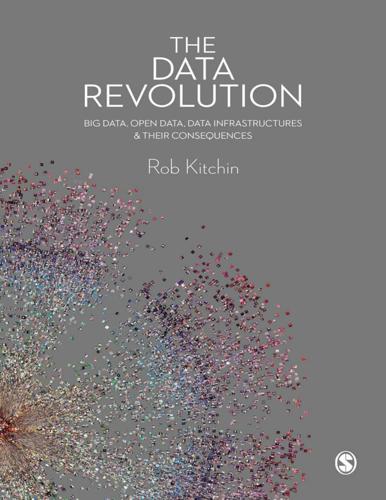
The Data Revolution: Big Data, Open Data, Data Infrastructures and Their Consequences
by
Rob Kitchin
Published 25 Aug 2014
Such was its prevalence and associated boosterism that Gartner’s had already declared by January 2013 that it had moved along the hype cycle from ‘peak of inflated expectation’ to ‘trough of disillusionment’ (Sicular 2013), with some evangelists already declaring ‘big data’ dead as a meaningful term, having become too wideranging and woolly in definition (e.g., de Goes 2013), some early adopters struggling to convert investment into return, and others voicing scepticism as to its potential benefits. Nonetheless, business, government and research funders have largely remained firm in their conviction that big data is set to rise back up the hype cycle’s ‘slope of enlightenment’ to the ‘plateau of productivity’, and, what’s more, it is set to alter fundamentally how science and business are conducted (Sicular 2013; see Chapters 7 and 8).
…
Index A/B testing 112 abduction 133, 137, 138–139, 148 accountability 34, 44, 49, 55, 63, 66, 113, 116, 165, 171, 180 address e-mail 42 IP 8, 167, 171 place 8, 32, 42, 45, 52, 93, 171 Web 105 administration 17, 30, 34, 40, 42, 56, 64, 67, 87, 89, 114–115, 116, 124, 174, 180, 182 aggregation 8, 14, 101, 140, 169, 171 algorithm 5, 9, 21, 45, 76, 77, 83, 85, 89, 101, 102, 103, 106, 109, 111, 112, 118, 119, 122, 125, 127, 130, 131, 134, 136, 142, 146, 154, 160, 172, 177, 179, 181, 187 Amazon 72, 96, 131, 134 Anderson, C. 130, 135 Andrejevic, M. 133, 167, 178 animation 106, 107 anonymity 57, 63, 79, 90, 92, 116, 167, 170, 171, 172, 178 apophenia 158, 159 Application Programming Interfaces (APIs) 57, 95, 152, 154 apps 34, 59, 62, 64, 65, 78, 86, 89, 90, 95, 97, 125, 151, 170, 174, 177 archive 21, 22, 24, 25, 29–41, 48, 68, 95, 151, 153, 185 archiving 23, 29–31, 64, 65, 141 artificial intelligence 101, 103 Acxiom 43, 44 astronomy 34, 41, 72, 97 ATM 92, 116 audio 74, 77, 83 automatic meter reading (AMR) 89 automatic number plate recognition (ANPR) 85, 89 automation 32, 51, 83, 85, 87, 89–90, 98, 99, 102, 103, 118, 127, 136, 141, 146, 180 Ayasdi 132, 134 backup 29, 31, 40, 64, 163 barcode 74, 85, 92, Bates, J. 56, 61, 62, 182 Batty, M. 90, 111, 112, 140 Berry, D. 134, 141 bias 13, 14, 19, 28, 45, 101, 134–136, 153, 154, 155, 160 Big Brother 126, 180 big data xv, xvi, xvii, 2, 6, 13, 16, 20, 21, 27–29, 42, 46, 67–183, 186, 187, 188, 190, 191, 192 analysis 100–112 characteristics 27–29, 67–79 enablers 80–87 epistemology 128–148 ethical issues 165–183 etymology 67 organisational issues 160–163 rationale 113–127 sources 87–99 technical issues 149–160 biological sciences 128–129, 137 biometric data 8, 84, 115 DNA 8, 71, 84 face 85, 88, 105 fingerprints 8, 9, 84, 87, 88, 115 gait 85, 88 iris 8, 84, 88 bit-rot 20 blog 6, 95, 170 Bonferroni principle 159 born digital 32, 46, 141 Bowker, G. 2, 19, 20, 22, 24 Borgman, C. 2, 7, 10, 20, 30, 37, 40, 41 boyd, D. 68, 75, 151, 152, 156, 158, 160, 182 Brooks, D. 130, 145 business 1, 16, 42, 45, 56, 61, 62, 67, 79, 110, 113–127, 130, 137, 149, 152, 161, 166, 172, 173, 187 calculative practices 115–116 Campbell’s Law 63, 127 camera 6, 81, 83, 87, 88, 89, 90, 107, 116, 124, 167, 178, 180 capitalism 15, 16, 21, 59, 61, 62, 86, 95, 114, 119–123, 126, 136, 161, 184, 186 capta 2 categorization 6, 8, 12, 19, 20, 102, 106, 176 causation 130, 132, 135, 147 CCTV 87, 88, 180 census 17, 18, 19, 22, 24, 27, 30, 43, 54, 68, 74, 75, 76, 77, 87, 102, 115, 157, 176 Centro De Operações Prefeitura Do Rio 124–125, 182 CERN 72, 82 citizen science 97–99, 155 citizens xvi, 45, 57, 58, 61, 63, 71, 88, 114, 115, 116, 126, 127, 165, 166, 167, 174, 176, 179, 187 citizenship 55, 115, 170, 174 classification 6, 10, 11, 23, 28, 104, 105, 157, 176 clickstream 43, 92, 94, 120, 122, 154, 176 clustering 103, 104, 105, 106, 110, 122 Codd, E. 31 competitiveness xvi, 16, 114, computation 2, 4, 5, 6, 29, 32, 68, 80, 81–82, 83, 84, 86, 98, 100, 101, 102, 110, 129, 136, 139–147, 181 computational social science xiv, 139–147, 152, 186 computing cloud xv, 81, 86 distributed xv, 37, 78, 81, 83, 98 mobile xv, 44, 78, 80, 81, 83, 85, 139 pervasive 81, 83–84, 98, 124 ubiquitous 80, 81, 83–84, 98, 100, 124, 126 confidence level 14, 37, 133, 153, 160 confidentiality 8, 169, 175 control creep 126, 166, 178–179 cookies 92, 119, 171 copyright 16, 30, 40, 49, 51, 54, 96 correlation 105, 110, 130, 131, 132, 135, 145, 147, 157, 159 cost xv, 6, 11, 16, 27, 31, 32, 37, 38, 39, 40, 44, 52, 54, 57, 58, 59, 61, 66, 80, 81, 83, 85, 93, 96, 100, 116, 117, 118, 120, 127, 150 Crawford, K. 68, 75, 135, 151, 152, 155, 156, 158, 160, 182 credit cards 8, 13, 42, 44, 45, 85, 92, 167, 171, 176 risk 42, 63, 75, 120, 176, 177 crime 55, 115, 116, 123, 175, 179 crowdsourcing 37, 73, 93, 96–97, 155, 160 Cukier, K. 68, 71, 72, 91, 114, 128, 153, 154, 161, 174 customer relationship management (CRM) 42, 99, 117–118, 120, 122, 176 cyber-infrastructure 33, 34, 35, 41, 186 dashboard 106, 107, 108 data accuracy 12, 14, 110, 153, 154, 171 administrative 84–85, 89, 115, 116, 125, 150, 178 aggregators see data brokers amplification 8, 76, 99, 102, 167 analogue 1, 3, 32, 83, 88, 140, 141 analytics 42, 43, 63, 73, 80, 100–112, 116, 118, 119, 120, 124, 125, 129, 132, 134, 137, 139, 140, 145, 146, 149, 151, 159, 160, 161, 176, 179, 186, 191 archive see archive assemblage xvi, xvii, 2, 17, 22, 24–26, 66, 80, 83, 99, 117, 135, 139, 183, 184–192 attribute 4, 8–9, 31, 115, 150 auditing 33, 40, 64, 163 authenticity 12, 153 automated see automation bias see bias big see big data binary 1, 4, 32, 69 biometric see biometric data body 177–178, 187 boosterism xvi, 67, 127, 187, 192 brokers 42–45, 46, 57, 74, 75, 167, 183, 186, 187, 188, 191 calibration 13, 20 catalogue 32, 33, 35 clean 12, 40, 64, 86, 100, 101, 102, 152, 153, 154, 156 clearing house 33 commodity xvi, 4, 10, 12, 15, 16, 41, 42–45, 56, 161 commons 16, 42 consolidators see data brokers cooked 20, 21 corruption 19, 30 curation 9, 29, 30, 34, 36, 57, 141 definition 1, 2–4 deluge xv, 28, 73, 79, 100, 112, 130, 147, 149–151, 157, 168, 175 derived 1, 2, 3, 6–7, 8, 31, 32, 37, 42, 43, 44, 45, 62, 86, 178 deserts xvi, 28, 80, 147, 149–151, 161 determinism 45, 135 digital 1, 15, 31, 32, 67, 69, 71, 77, 82, 85, 86, 90, 137 directories 33, 35 dirty 29, 154, 163 dive 64–65, 188 documentation 20, 30, 31, 40, 64, 163 dredging 135, 147, 158, 159 dump 64, 150, 163 dynamic see dynamic data enrichment 102 error 13, 14, 44, 45, 101, 110, 153, 154, 156, 169, 175, 180 etymology 2–3, 67 exhaust 6–7, 29, 80, 90 fidelity 34, 40, 55, 79, 152–156 fishing see data dredging formats xvi, 3, 5, 6, 9, 22, 25, 30, 33, 34, 40, 51, 52, 54, 65, 77, 102, 153, 156, 157, 174 framing 12–26, 133–136, 185–188 gamed 154 holding 33, 35, 64 infrastructure xv, xvi, xvii, 2, 21–24, 25, 27–47, 52, 64, 102, 112, 113, 128, 129, 136, 140, 143, 147, 148, 149, 150, 156, 160, 161, 162, 163, 166, 184, 185, 186, 188, 189, 190, 191, 192 integration 42, 149, 156–157 integrity 12, 30, 33, 34, 37, 40, 51, 154, 157, 171 interaction 43, 72, 75, 85, 92–93, 94, 111, 167 interoperability 9, 23, 24, 34, 40, 52, 64, 66, 156–157, 163, 184 interval 5, 110 licensing see licensing lineage 9, 152–156 linked see linked data lost 5, 30, 31, 39, 56, 150 markets xvi, 8, 15, 25, 42-45, 56, 59, 75, 167, 178 materiality see materiality meta see metadata mining 5, 77, 101, 103, 104–106, 109, 110, 112, 129, 132, 138, 159, 188 minimisation 45, 171, 178, 180 nominal 5, 110 ordinal 5, 110 open see open data ontology 12, 28, 54, 150 operational 3 ownership 16, 40, 96, 156, 166 preparation 40, 41, 54, 101–102 philosophy of 1, 2, 14, 17–21, 22, 25, 128–148, 185–188 policy 14, 23, 30, 33, 34, 37, 40, 48, 64, 160, 163, 170, 172, 173, 178 portals 24, 33, 34, 35 primary 3, 7–8, 9, 50, 90 preservation 30, 31, 34, 36, 39, 40, 64, 163 protection 15, 16, 17, 20, 23, 28, 40, 45, 62, 63, 64, 167, 168–174, 175, 178, 188 protocols 23, 25, 30, 34, 37 provenance 9, 30, 40, 79, 153, 156, 179 qualitative 4–5, 6, 14, 146, 191 quantitative 4–5, 14, 109, 127, 136, 144, 145, 191 quality 12, 13, 14, 34, 37, 40, 45, 52, 55, 57, 58, 64, 79, 102, 149, 151, 152–156, 157, 158 raw 1, 2, 6, 9, 20, 86, 185 ratio 5, 110 real-time 65, 68, 71, 73, 76, 88, 89, 91, 99, 102, 106, 107, 116, 118, 121, 124, 125, 139, 151, 181 reduction 5, 101–102 representative 4, 8, 13, 19, 21, 28 relational 3, 8, 28, 44, 68, 74–76, 79, 84, 85, 87, 88, 99, 100, 119, 140, 156, 166, 167, 184 reliability 12, 13–14, 52, 135, 155 resellers see data brokers resolution 7, 26, 27, 28, 68, 72, 73–74, 79, 84, 85, 89, 92, 133–134, 139, 140, 150, 180 reuse 7, 27, 29, 30, 31, 32, 39, 40, 41, 42, 46, 48, 49–50, 52, 56, 59, 61, 64, 102, 113, 163 scaled xvi, xvii 32, 100, 101, 112, 138, 149, 150, 163, 186 scarcity xv, xvi, 28, 80, 149–151, 161 science xvi, 100–112, 130, 137–139, 148, 151, 158, 160–163, 164, 191 secondary 3, 7–8 security see security selection 101, 176 semi-structured 4, 5–6, 77, 100, 105 sensitive 15, 16, 45, 63, 64, 137, 151, 167, 168, 171, 173, 174 shadow 166–168, 177, 179, 180 sharing 9, 11, 20, 21, 23, 24, 27, 29–41, 48–66, 80, 82, 95, 113, 141, 151, 174, 186 small see small data social construction 19–24 spatial 17, 52, 63, 68, 73, 75, 84–85, 88–89 standards xvi, 9, 14, 19, 22, 23, 24, 25, 31, 33, 34, 38, 40, 52, 53, 64, 102, 153, 156, 157 storage see storage stranded 156 structures 4, 5–6, 12, 21, 23, 30, 31, 40, 51, 68, 77, 86, 103, 106, 156 structured 4, 5–6, 11, 32, 52, 68, 71, 75, 77, 79, 86, 88, 105, 112, 163 tertiary 7–8, 9, 27, 74 time-series 68, 102, 106, 110 transient 6–7, 72, 150 transactional 42, 43, 71, 72, 74, 75, 85, 92, 93–94, 120, 122, 131, 167, 175, 176, 177 uncertainty see uncertainty unstructured 4, 5–6, 32, 52, 68, 71, 75, 77, 86, 100, 105, 112, 140, 153, 157 validity 12, 40, 72, 102, 135, 138, 154, 156, 158 variety 26, 28, 43, 44, 46, 68, 77, 79, 86, 139, 140, 166, 184 velocity 26, 28, 29, 68, 76–77, 78, 79, 86, 88, 102, 106, 112. 117, 140, 150, 153, 156, 184 veracity 13, 79, 102, 135, 152–156, 157, 163 volume 7, 26, 27, 28, 29, 32, 46, 67, 68, 69–72, 74, 76, 77, 78, 79, 86, 102, 106, 110, 125, 130, 135, 140, 141, 150, 156, 166, 184 volunteered 87, 93–98, 99, 155 databank 29, 34, 43 database NoSQL 6, 32, 77, 78, 86–87 relational 5, 6, 8, 32–33, 43, 74–75, 77, 78, 86, 100, 105 data-driven science 133, 137–139, 186 data-ism 130 datafication 181 dataveillance 15, 116, 126, 157, 166–168, 180, 181, 182, 184 decision tree 104, 111, 122, 159, deconstruction 24, 98, 126, 189–190 decontextualisation 22 deduction 132, 133, 134, 137, 138, 139, 148 deidentification 171, 172, 178 democracy 48, 55, 62, 63, 96, 117, 170 description 9, 101, 104, 109, 143, 147, 151, 190 designated community 30–31, 33, 46 digital devices 13, 25, 80, 81, 83, 84, 87, 90–91, 167, 174, 175 humanities xvi, 139–147, 152, 186 object identifier 8, 74 serendipity 134 discourse 15, 20, 55, 113–114, 117, 122, 127, 192 discursive regime 15, 20, 24, 56, 98, 113–114, 116, 123, 126, 127, 190 disruptive innovation xv, 68, 147, 184, 192 distributed computing xv, 37, 78, 81, 83, 98 sensors 124, 139, 160 storage 34, 37, 68, 78, 80, 81, 85–87, 97 division of labour 16 Dodge, M. 2, 21, 68, 73, 74, 76, 83, 84, 85, 89, 90, 92, 93, 96, 113, 115, 116, 124, 154, 155, 167, 177, 178, 179, 180, 189 driver’s licence 45, 87, 171 drone 88, Dublin Core 9 dynamic data xv, xvi, 76–77, 86, 106, 112 pricing 16, 120, 123, 177 eBureau 43, 44 ecological fallacy 14, 102, 135, 149, 158–160 Economist, The 58, 67, 69, 70, 72, 128 efficiency 16, 38, 55, 56, 59, 66, 77, 93, 102, 111, 114, 116, 118, 119, 174, 176 e-mail 71, 72–73, 82, 85, 90, 93, 116, 174, 190 empiricism 129, 130–137, 141, 186 empowerment 61, 62–63, 93, 115, 126, 165 encryption 171, 175 Enlightenment 114 Enterprise Resource Planning (ERP) 99, 117, 120 entity extraction 105 epistemology 3, 12, 19, 73, 79, 112, 128–148, 149, 185, 186 Epsilon 43 ethics 12, 14–15, 16, 19, 26, 30, 31, 40, 41, 64, 73, 99, 128, 144, 151, 163, 165–183, 186 ethnography 78, 189, 190, 191 European Union 31, 38, 45, 49, 58, 59, 70, 157, 168, 173, 178 everyware 83 exhaustive 13, 27, 28, 68, 72–73, 79, 83, 88, 100, 110, 118, 133–134, 140, 150, 153, 166, 184 explanation 101, 109, 132, 133, 134, 137, 151 extensionality 67, 78, 140, 184 experiment 2, 3, 6, 34, 75, 78, 118, 129, 131, 137, 146, 150, 160 Facebook 6, 28, 43, 71, 72, 77, 78, 85, 94, 119, 154, 170 facts 3, 4, 9, 10, 52, 140, 159 Fair Information Practice Principles 170–171, 172 false positive 159 Federal Trade Commission (FTC) 45, 173 flexibility 27, 28, 68, 77–78, 79, 86, 140, 157, 184 Flickr 95, 170 Flightradar 107 Floridi, L. 3, 4, 9, 10, 11, 73, 112, 130, 151 Foucault, M. 16, 113, 114, 189 Fourth paradigm 129–139 Franks, B. 6, 111, 154 freedom of information 48 freemium service 60 funding 15, 28, 29, 31, 34, 37, 38, 40, 41, 46, 48, 52, 54–55, 56, 57–58, 59, 60, 61, 65, 67, 75, 119, 143, 189 geographic information systems 147 genealogy 98, 127, 189–190 Gitelman, L. 2, 19, 20, 21, 22 Global Positioning System (GPS) 58, 59, 73, 85, 88, 90, 121, 154, 169 Google 32, 71, 73, 78, 86, 106, 109, 134, 170 governance 15, 21, 22, 23, 38, 40, 55, 63, 64, 66, 85, 87, 89, 117, 124, 126, 136, 168, 170, 178–182, 186, 187, 189 anticipatory 126, 166, 178–179 technocratic 126, 179–182 governmentality xvi, 15, 23, 25, 40, 87, 115, 127, 168, 185, 191 Gray, J. 129–130 Guardian, The 49 Gurstein, M. 52, 62, 63 hacking 45, 154, 174, 175 hackathon 64–65, 96, 97, 188, 191 Hadoop 87 hardware 32, 34, 40, 63, 78, 83, 84, 124, 143, 160 human resourcing 112, 160–163 hype cycle 67 hypothesis 129, 131, 132, 133, 137, 191 IBM 70, 123, 124, 143, 162, 182 identification 8, 44, 68, 73, 74, 77, 84–85, 87, 90, 92, 115, 169, 171, 172 ideology 4, 14, 25, 61, 113, 126, 128, 130, 134, 140, 144, 185, 190 immutable mobiles 22 independence 3, 19, 20, 24, 100 indexical 4, 8–9, 32, 44, 68, 73–74, 79, 81, 84–85, 88, 91, 98, 115, 150, 156, 167, 184 indicator 13, 62, 76, 102, 127 induction 133, 134, 137, 138, 148 information xvii, 1, 3, 4, 6, 9–12, 13, 23, 26, 31, 33, 42, 44, 45, 48, 53, 67, 70, 74, 75, 77, 92, 93, 94, 95, 96, 100, 101, 104, 105, 109, 110, 119, 125, 130, 138, 140, 151, 154, 158, 161, 168, 169, 171, 174, 175, 184, 192 amplification effect 76 freedom of 48 management 80, 100 overload xvi public sector 48 system 34, 65, 85, 117, 181 visualisation 109 information and communication technologies (ICTs) xvi, 37, 80, 83–84, 92, 93, 123, 124 Innocentive 96, 97 INSPIRE 157 instrumental rationality 181 internet 9, 32, 42, 49, 52, 53, 66, 70, 74, 80, 81, 82, 83, 86, 92, 94, 96, 116, 125, 167 of things xv, xvi, 71, 84, 92, 175 intellectual property rights xvi, 11, 12, 16, 25, 30, 31, 40, 41, 49, 50, 56, 62, 152, 166 Intelius 43, 44 intelligent transportation systems (ITS) 89, 124 interoperability 9, 23, 24, 34, 40, 52, 64, 66, 149, 156–157, 163, 184 interpellation 165, 180, 188 interviews 13, 15, 19, 78, 155, 190 Issenberg, S. 75, 76, 78, 119 jurisdiction 17, 25, 51, 56, 57, 74, 114, 116 Kafka 180 knowledge xvii, 1, 3, 9–12, 19, 20, 22, 25, 48, 53, 55, 58, 63, 67, 93, 96, 110, 111, 118, 128, 130, 134, 136, 138, 142, 159, 160, 161, 162, 187, 192 contextual 48, 64, 132, 136–137, 143, 144, 187 discovery techniques 77, 138 driven science 139 economy 16, 38, 49 production of 16, 20, 21, 24, 26, 37, 41, 112, 117, 134, 137, 144, 184, 185 pyramid 9–10, 12, situated 16, 20, 28, 135, 137, 189 Latour, B. 22, 133 Lauriault, T.P. 15, 16, 17, 23, 24, 30, 31, 33, 37, 38, 40, 153 law of telecosm 82 legal issues xvi, 1, 23, 25, 30, 31, 115, 165–179, 182, 183, 187, 188 levels of measurement 4, 5 libraries 31, 32, 52, 71, 141, 142 licensing 14, 25, 40, 42, 48, 49, 51, 53, 57, 73, 96, 151 LIDAR 88, 89, 139 linked data xvii, 52–54, 66, 156 longitudinal study 13, 76, 140, 149, 150, 160 Lyon, D. 44, 74, 87, 167, 178, 180 machine learning 5, 6, 101, 102–104, 106, 111, 136, 188 readable 6, 52, 54, 81, 84–85, 90, 92, 98 vision 106 management 62, 88, 117–119, 120, 121, 124, 125, 131, 162, 181 Manovich, L. 141, 146, 152, 155 Manyika, J. 6, 16, 70, 71, 72, 104, 116, 118, 119, 120, 121, 122, 161 map 5, 22, 24, 34, 48, 54, 56, 73, 85, 88, 93, 96, 106, 107, 109, 115, 143, 144, 147, 154, 155–156, 157, 190 MapReduce 86, 87 marginal cost 11, 32, 57, 58, 59, 66, 151 marketing 8, 44, 58, 73, 117, 119, 120–123, 131, 176 marketisation 56, 61–62, 182 materiality 4, 19, 21, 24, 25, 66, 183, 185, 186, 189, 190 Mattern, S. 137, 181 Mayer-Schonberger, V. 68, 71, 72, 91, 114, 153, 154, 174 measurement 1, 3, 5, 6, 10, 12, 13, 15, 19, 23, 69, 97, 98, 115, 128, 166 metadata xvi, 1, 3, 4, 6, 8–9, 13, 22, 24, 29, 30, 31, 33, 35, 40, 43, 50, 54, 64, 71, 72, 74, 78, 85, 91, 93, 102, 105, 153, 155, 156 methodology 145, 158, 185 middleware 34 military intelligence 71, 116, 175 Miller, H.J. xvi, 27, 100, 101, 103, 104, 138, 139, 159 Minelli, M. 101, 120, 137, 168, 170, 171, 172, 174, 176 mixed methods 147, 191 mobile apps 78 computing xv, 44, 78, 80, 81, 83, 85, 139 mapping 88 phones 76, 81, 83, 90, 93, 151, 168, 170, 175 storage 85 mode of production 16 model 7, 11, 12, 24, 32, 37, 44, 57, 72, 73, 101, 103, 105, 106, 109, 110–112, 119, 125, 129, 130, 131, 132, 133, 134, 137, 139, 140, 144, 145, 147, 158–159, 166, 181 agent-based model 111, business 30, 54, 57–60, 61, 95, 118, 119, 121 environmental 139, 166 meteorological 72 time-space 73 transportation 7 modernity 3 Moore’s Law 81, moral philosophy 14 Moretti, F. 141–142 museum 31, 32, 137 NASA 7 National Archives and Records Administration (NARA) 67 National Security Agency (NSA) 45, 116 natural language processing 104, 105 near-field communication 89, 91 neoliberalism 56, 61–62, 126, 182 neural networks 104, 105, 111 New Public Management 62, non-governmental organisations xvi, 43, 55, 56, 73, 117 non-excludable 11, 151 non-rivalrous 11, 57, 151 normality 100, 101 normative thinking 12, 15, 19, 66, 99, 127, 144, 182, 183, 187, 192 Obama, B. 53, 75–76, 78, 118–119 objectivity 2, 17, 19, 20, 62, 135, 146, 185 observant participation 191 oligopticon 133, 167, 180 ontology 3, 12, 17–21, 22, 28, 54, 79, 128, 138, 150, 156, 177, 178, 184, 185 open data xv, xvi, xvii, 2, 12, 16, 21, 25, 48–66, 97, 114, 124, 128, 129, 140, 149, 151, 163, 164, 167, 186, 187, 188, 190, 191, 192 critique of 61–66 economics of 57–60 rationale 54–56 Open Definition 50 OpenGovData 50, 51 Open Knowledge Foundation 49, 52, 55, 58, 189, 190 open science 48, 72, 98 source 48, 56, 60, 87, 96 OpenStreetMap 73, 93, 96, 154, 155–156 optimisation 101, 104, 110–112, 120, 121, 122, 123 Ordnance Survey 54, 57 Organization for Economic Cooperation and Development (OECD) 49, 50, 59 overlearning 158, 159 panoptic 133, 167, 180 paradigm 112, 128–129, 130, 138, 147, 148, 186 participant observation 190, 191 participation 48, 49, 55, 66, 82, 94, 95, 96, 97–98, 126, 155, 165, 180 passport 8, 45, 84, 87, 88, 115 patent 13, 16, 41, 51 pattern recognition 101, 104–106, 134, 135 personally identifiable information 171 philanthropy 32, 38, 58 philosophy of science 112, 128–148, 185–188 phishing 174, 175 phone hacking 45 photography 6, 43, 71, 72, 74, 77, 86, 87, 88, 93, 94, 95, 105, 115, 116, 141, 155, 170 policing 80, 88, 116, 124, 125, 179 political economy xvi, 15–16, 25, 42–45, 182, 185, 188, 191 Pollock, R. 49, 54, 56, 57 58, 59 positivism 129, 136–137, 140, 141, 144, 145, 147 post-positivism 140, 144, 147 positionality 135, 190 power/knowledge 16, 22 predictive modelling 4, 7, 12, 34, 44, 45, 76, 101, 103, 104, 110–112, 118, 119, 120, 125, 132, 140, 147, 168, 179 profiling 110–112, 175–178, 179, 180 prescription 101 pre-analytical 2, 3, 19, 20, 185 pre-analytics 101–102, 112 pre-factual 3, 4, 19, 185 PRISM 45, 116 privacy 15, 28, 30, 40, 45, 51, 57, 63, 64, 96, 117, 163, 165, 166, 168–174, 175, 178, 182, 187 privacy by design 45, 173, 174 probability 14, 110, 153, 158 productivity xvi, 16, 39, 55, 66, 92, 114, 118 profiling 12, 42–45, 74, 75, 110–112, 119, 166, 168, 175–178, 179, 180, 187 propriety rights 48, 49, 54, 57, 62 prosumption 93 public good 4, 12, 16, 42, 52, 56, 58, 79, 97 –private partnerships 56, 59 sector information (PSI) 12, 48, 54, 56, 59, 61, 62 quantified self 95 redlining 176, 182 reductionism 73, 136, 140, 142, 143, 145 regression 102, 104, 105, 110, 111, 122 regulation xvi, 15, 16, 23, 25, 40, 44, 46, 83, 85, 87, 89–90, 114, 115, 123, 124, 126, 168, 174, 178, 180, 181–182, 187, 192 research design 7, 13, 14, 77–78, 98, 137–138, 153, 158 Renaissance xvi, 129, 141 repository 29, 33, 34, 41 representativeness 13, 14, 19, 21 Resource Description Framework (RDF) 53, 54 remote sensing 73–74, 105 RFID 74, 85, 90, 91, 169 rhetorical 3, 4, 185 right to be forgotten 45, 172, 187 information (RTI) 48, 62 risk 16, 44, 58, 63, 118, 120, 123, 132, 158, 174, 176–177, 178, 179, 180 Rosenberg, D. 1, 3 Ruppert, E. 22, 112, 157, 163, 187 sampling 13, 14, 27, 28, 46, 68, 72, 73, 77, 78, 88, 100, 101, 102, 120, 126, 133, 138, 139, 146, 149–150, 152, 153, 154, 156, 159 scale of economy 37 scanners 6, 25, 29, 32, 83, 85, 88, 89, 90, 91, 92, 175, 177, 180 science xvi, 1, 2, 3, 19, 20, 29, 31, 34, 37, 46, 65, 67, 71, 72, 73, 78, 79, 97, 98, 100, 101, 103, 111, 112, 128–139, 140, 147, 148, 150, 158, 161, 165, 166, 181, 184, 186 scientific method 129, 130, 133, 134, 136, 137–138, 140, 147, 148, 186 security data 28, 33, 34, 40, 45, 46, 51, 57, 126, 157, 166, 169, 171, 173, 174–175, 182, 187 national 42, 71, 88, 116–117, 172, 176, 178, 179 private 99, 115, 118, 151 social 8, 32, 45, 87, 115, 171 segmentation 104, 105, 110, 119, 120, 121, 122, 176 semantic information 9, 10, 11, 105, 157 Web 49, 52, 53, 66 sensors xv, 6, 7, 19, 20, 24, 25, 28, 34, 71, 76, 83, 84, 91–92, 95, 124, 139, 150, 160 sentiment analysis 105, 106, 121, Siegel, E. 103, 110, 111, 114, 120, 132, 158, 176, 179 signal 9, 151, 159 Silver, N. 136, 151, 158 simulation 4, 32, 37, 101, 104, 110–112, 119, 129, 133, 137, 139, 140 skills 37, 48, 52, 53, 57, 63, 94, 97, 98, 112, 149, 160–163, 164 small data 21, 27–47, 68, 72, 75, 76, 77, 79, 100, 103, 110, 112, 146, 147, 148, 150, 156, 160, 166, 184, 186, 188, 191 smart cards 90 cities 91, 92, 99, 124–125, 181–182 devices 83 metering 89, 123, 174 phones 81, 82, 83, 84, 90, 94, 107, 121, 155, 170, 174 SmartSantander 91 social computing xvi determinism 144 media xv, 13, 42, 43, 76, 78, 90, 93, 94–95, 96, 105, 119, 121, 140, 150, 151, 152, 154, 155, 160, 167, 176, 180 physics 144 security number 8, 32, 45, 87, 115, 171 sorting 126, 166, 168, 175–178, 182 sociotechnical systems 21–24, 47, 66, 183, 185, 188 software 6, 20, 32, 34, 40, 48, 53, 54, 56, 63, 80, 83, 84, 86, 88, 96, 132, 143, 160, 161, 163, 166, 170, 172, 175, 177, 180, 189 Solove, D. 116, 120, 168, 169, 170, 172, 176, 178, 180 solutionism 181 sousveillance 95–96 spatial autocorrelation 146 data infrastructure 34, 35, 38 processes 136, 144 resolution 149 statistics 110 video 88 spatiality 17, 157 Star, S.L. 19, 20, 23, 24 stationarity 100 statistical agencies 8, 30, 34, 35, 115 geography 17, 74, 157 statistics 4, 8, 13, 14, 24, 48, 77, 100, 101, 102, 104, 105, 109–110, 111, 129, 132, 134, 135, 136, 140, 142, 143, 145, 147, 159 descriptive 4, 106, 109, 147 inferential 4, 110, 147 non-parametric 105, 110 parametric 105, 110 probablistic 110 radical 147 spatial 110 storage 31–32, 68, 72, 73, 78, 80, 85–87, 88, 100, 118, 161, 171 analogue 85, 86 digital 85–87 media 20, 86 store loyalty cards 42, 45, 165 Sunlight Foundation 49 supervised learning 103 Supply Chain Management (SCM) 74, 99, 117–118, 119, 120, 121 surveillance 15, 71, 80, 83, 87–90, 95, 115, 116, 117, 123, 124, 151, 165, 167, 168, 169, 180 survey 6, 17, 19, 22, 28, 42, 68, 75, 77, 87, 115, 120 sustainability 16, 33, 34, 57, 58, 59, 61, 64–66, 87, 114, 123–124, 126, 155 synchronicity 14, 95, 102 technological handshake 84, 153 lock-in 166, 179–182 temporality 17, 21, 27, 28, 32, 37, 68, 75, 111, 114, 157, 160, 186 terrorism 116, 165, 179 territory 16, 38, 74, 85, 167 Tesco 71, 120 Thrift, N. 83, 113, 133, 167, 176 TopCoder 96 trading funds 54–55, 56, 57 transparency 19, 38, 44, 45, 48–49, 55, 61, 62, 63, 113, 115, 117, 118, 121, 126, 165, 173, 178, 180 trust 8, 30, 33, 34, 40, 44, 55, 84, 117, 152–156, 163, 175 trusted digital repository 33–34 Twitter 6, 71, 78, 94, 106, 107, 133, 143, 144, 146, 152, 154, 155, 170 uncertainty 10, 13, 14, 100, 102, 110, 156, 158 uneven development 16 Uniform Resource Identifiers (URIs) 53, 54 United Nations Development Programme (UNDP) 49 universalism 20, 23, 133, 140, 144, 154, 190 unsupervised learning 103 utility 1, 28, 53, 54, 55, 61, 63, 64–66, 100, 101, 114, 115, 134, 147, 163, 185 venture capital 25, 59 video 6, 43, 71, 74, 77, 83, 88, 90, 93, 94, 106, 141, 146, 170 visual analytics 106–109 visualisation 5, 10, 34, 77, 101, 102, 104, 106–109, 112, 125, 132, 141, 143 Walmart 28, 71, 99, 120 Web 2.0 81, 94–95 Weinberger, D. 9, 10, 11, 96, 97, 132, 133 White House 48 Wikipedia 93, 96, 106, 107, 143, 154, 155 Wired 69, 130 wisdom 9–12, 114, 161 XML 6, 53 Zikopoulos, P.C. 6, 16, 68, 70, 73, 76, 119, 151
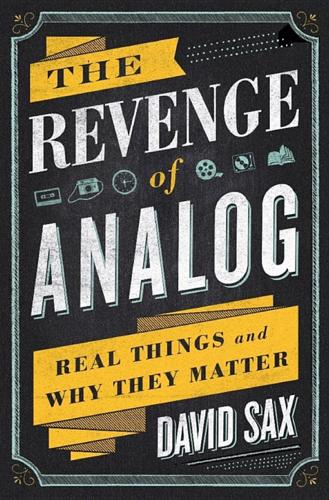
The Revenge of Analog: Real Things and Why They Matter
by
David Sax
Published 8 Nov 2016
Cuban, who lives and works in the heart of Silicon Valley, began as a hopeful evangelist for education technology, but slowly turned into one of ed tech’s most prominent skeptics after witnessing, time and again, the failure of ed tech to deliver on its promises. He calls it the hype cycle. “There is this pattern of extreme claims for transformation, and then a kind of bumpy landing and disappointment.” Why does this happen, over and over again, without the technology industry, the educational institutions, and other stakeholders learning from their mistakes? It is not as though the evidence is lacking, or industry leaders lack the ability to learn from mistakes. Rather, Cuban attributes the persistence of ed tech’s hype cycle to deeply held values around technology and innovation. “In this culture, like other developed cultures, technology is seen as an unadulterated good,” he said.
…
See e-readers digital Sabbath, xii digital special effects, 72 digital studios, 23–24, 25, 26 digital synthesizers, 23 digital technology impact of, views on, xiii, xv, 239, 240 increasing role of, analog’s rise amidst, xiv–xv See also specific digital things, processes, and ideas digital technology industry, 161–166, 177, 207, 208, 226 digital technology workplaces conducting work in, 207, 208, 221–224 meditation and thinking in, 205–207, 208–211 meetings and communication in, 219–221 physical workspace in, 211–217 digital textbooks, 189–190 digital utopia, xvi, xvii, 178, 184 digital watches, 168 digital work standard narrative on, 154, 155, 160 value gap involving, 160, 161, 171 Discogs, 12, 20–21, 137 disruption, xv, xvii, xviii, 31, 91, 103, 153, 162, 164, 168, 175, 177, 179, 189, 200, 201, 208, 210, 238 distance-learning initiatives, previous, 201 Doeblin, Chris, 132, 140–141, 142, 144, 146–147, 148 Dollar Shave Club, 137 Donors Choose, 191 DOS systems, 65 Drift (magazine), 105 DriveThruCards, 91 drones, 163, 187, 234 Duke University, 183 Dund Gol, 15 Dundas Central Public School, 196 Dungeons and Dragons, 78, 82, 85, 98 dysphoria, 238 Earley, Matt, 17 early childhood education (ECE), 180–182 Eastman Kodak, 55, 71 See also Kodak eBay, 12, 107, 124, 146, 238 eBooks, 124, 126, 142, 143, 187, 189 Ecojot journals, 126 e-commerce disadvantages of, 129, 130, 132, 134, 135–136 growth of, 124, 126 profitability in, issue of, 125, 133, 136 sales from, by brick-and-mortar stores, 136–137 economic inequality, 161, 165, 166 Economist, The (magazine), 45, 110, 111, 155 ed tech appropriate use of, advantages in, 182–183, 198 attraction of, to politicians/policymakers, 186 costs of, 186–187 greatest promises and failures of, 201–203 hype cycle of, 179 spending on, 177, 179, 187, 191–192 student preferences regarding, 188–189 and ways in which it falls short, 183–187, 189–190, 203, 204 Edison, Thomas, 179 education in early childhood, 180–182 more promising tools for affecting change in, 189, 190–192 new approaches to teaching in, 192–201 previous technologies predicted to change, 178–179 as a relationship, learning anchored in, 203–204 visualizing the future of, integrative approach to, 175, 176–177 education philanthropy, 177, 184, 191 educational inequality, ed tech failing to address, 183–184, 185 8 mm film, 56, 71 8-track tapes, 9 Elvis, 5, 22 e-mail, x, 30, 33, 44, 46, 210, 219, 220, 224, 233, 234, 237 eMarketer, 136 EMI, 25 empathy, defined, 193 Empathy Toy, 193–196, 198 Encore, 127 Endicott Books, 141 Enjoy, 139 e-readers, 108, 124, 130, 142, 143, 228, 231 Essen Spiel, 77, 95 Etsy, 126, 145, 146, 164 Evernote, 46–47, 221, 222–223 Exploding Kittens, 92 Fab.com, 133 Facebook, 12, 39–40, 46, 80, 91, 94, 110, 137, 154, 155, 161, 162, 163, 165, 170, 199, 206, 211, 215–217, 224, 234, 236, 238 factory jobs.
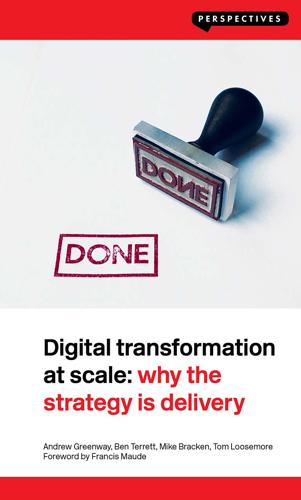
Digital Transformation at Scale: Why the Strategy Is Delivery
by
Andrew Greenway,Ben Terrett,Mike Bracken,Tom Loosemore
Published 18 Jun 2018
As the consequences of not doing them are minor and largely invisible to start with, people generally believe that it will stay that way. It becomes even easier for a large business or government administration to ignore hard yet necessary tasks if they can find something else that has the characteristics of work, while being much more comfortable to sink time into. Fortunately, the technology hype cycle is ready to provide a stream of distractions. All too often, the word digital is conflated with whatever technology fad has made it into the colour supplements this month. Blockchain. Artificial intelligence. The Internet of Things and connected devices. Robotic Process Automation. The captains of industry, ministers and senior officials who read colour supplements during their brief periods of down time see these exciting things and commission policy papers to unpick their potential effect on the organisations they run.
…
Resisting the hype Every business strategy presentation for the last two years (and the next three) will have a slide that says something like: ‘AI, blockchain, Internet of Things – what should we do?’ For most organisations, this discussion is a little premature. Even allowing for the fact these technology breakthroughs are near the top of their hype cycle at the time of writing, we are not saying that they are unimportant for large organisations, public or private. Far from it. We’re confident that artificial intelligence, connected devices and advances in cryptography will change the world, in predictable and unexpected ways. There are many excellent books, talks and blogs that do these subjects far better justice than we have the space to here.

Hit Makers: The Science of Popularity in an Age of Distraction
by
Derek Thompson
Published 7 Feb 2017
That means purposefully making products that will be fashionable or functional for only a limited time in order to encourage repeat shopping trips. Across the economy, companies realized that they could engineer turnover and multiply sales by constantly changing the colors, shapes, and styles of their goods. Technology enabled choices and choices created fashion—that perpetual hype cycle where designs and colors and behaviors appear suddenly cool and then suddenly anachronistic. It was an age of new things, a birth of American neophilia. Artists, once silenced by the whir of assembly belts churning out identical products, played a starring role in the new mass production economy.
…
News still carries influence—in the 1930s, the name Franklin soared in popularity while Adolf vanished—but there is nothing like direct advertising for names. No organization or company benefits from more sons named Michael, Noah, or Dmitri. The weird thing about first names is that, even though they’re free and infinite, they follow the same hot-and-cold “hype cycle” of many other products that do have finite choices, diverse prices, and lots of advertising. Just like clothes, first names are a fashion. Some names are cool today (Emily) while some once popular names now sound out-of-date (Ethel), even though the names Emily and Ethel are as Emilyish and Ethelian as they’ve always been.
…
Within a few years, on-the-nose social media messages were mostly condemned as embarrassing and forced, like a dad misquoting a new teen movie in an attempt to look hip. Advertising firms are still catching up to the fact that the fashion cycle of slang moves faster than their copy desks. Clothing, once a ritual, is now the definitive fashion. First names, once a tradition, now follow the hype cycle of fashion lines. Communication, too, is now coming to resemble the hallmarks of a fashion, where choices emerge and preferences change, sometimes with seeming arbitrariness, as people discover new, more convenient, and more fun ways to say hello. INTERLUDE A Brief History of Teens The teenager is one of the more unusual inventions of the twentieth century.
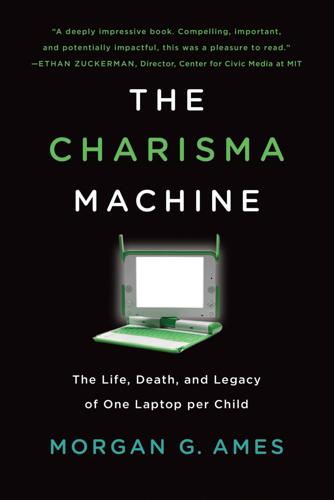
The Charisma Machine: The Life, Death, and Legacy of One Laptop Per Child
by
Morgan G. Ames
Published 19 Nov 2019
The hacker identity that resulted was one that was still deeply influenced by privilege, infrastructure, and proximity to cosmopolitan cores and international networks. Even though anthropology has deconstructed notions of center and periphery, the technological elite in Paraguay reinscribed their centrality and the peripherality of those they sought to help. 6 Performing Development The peak of the hype cycle was ... obviously deeply ideological, and interesting as such. But it also registered something real about the performative efficacy of what one might call “technological charisma.” That is to say, the hype was not just empty; rather, it brought about its own concrete social effects “on the ground.”
…
Anthropologist William Mazzarella has described performances such as this as “beautiful balloons” that captivate—until they deflate under the weight of broken promises. And just as this book does, he has connected this captivation with a kind of charisma: This charismatic moment, at the peak of the hype cycle, opened up new possibilities. As the moment passed, and gravity began to win, disillusionment set in. The erstwhile beautiful balloon, having apparently moved from hype to habit, remains more enigmatic than it might appear. Much of the air that has gone out of it was, in any case, stale: the exhaust fumes of nationalism, paternalist politics, and profit seeking ...
…
The performance that the visit elicited could help the project survive, even as it hid the ongoing work needed to do so; it showed teachers and students what success looked like, even as it concealed what would be required to achieve success in the long term; and it suggested that any obstacles encountered—breakage, disinterest, “little toys,” drained batteries, missing software, infrastructural deficiencies, unrealistic labor expectations, design flaws, media corporations, language barriers—were merely small speedbumps on the road to laptop-driven, child-led progress. I, like Mazzarella, was fascinated by what he has called the “hype cycle,” not only because of its “inflated, excessive tone” but because of the “collective desire” it demonstrated.28 This operates simultaneously on the planes of the ideological and the material—one does not preclude the other, as the quote that opens this chapter also attests. But where, really, have these charismatic performances left Caacupé, Paraguay Educa, and One Laptop per Child?

The Coming Wave: Technology, Power, and the Twenty-First Century's Greatest Dilemma
by
Mustafa Suleyman
Published 4 Sep 2023
We must begin to suggest what to do if it looks like there is a real risk that technology fails us. What’s required is a societal and political response, not merely individual efforts, but it needs to begin with my peers and me. Some will argue this is all overblown. That change is far more incremental. That it is just another turn of the hype cycle. That systems for coping with crises and change are actually quite robust. That my view of human nature is far too dark. That humanity’s record is, well, so far, so good. History is full of false prophets and doomsayers proven wrong. Why should this time be different? Pessimism aversion is an emotional response, an ingrained gut refusal to accept the possibility of seriously destabilizing outcomes.
…
This kind of power is even harder to centralize and oversee; this wave is not just a deepening and acceleration of history’s pattern, then, but also a sharp break from it. Not everyone agrees these technologies are either as locked on or as consequential as I think they are. Skepticism and pessimism aversion are not unreasonable responses, given there is much uncertainty. Each technology is subject to a vicious hype cycle, each is uncertain in development and reception, each is surrounded by challenges technical, ethical, and social. None is complete. There are certain to be setbacks, and many of the harms—and indeed benefits—are still unclear. But each is also growing more concrete, developed, and capable by the day.
…
Many who ridicule overly optimistic technologists stick to writing theoretical oversight frameworks or op-eds calling for regulation. If you believe technology is important and powerful, and you follow the implications of these critiques, such responses are clearly inadequate. Even the critics duck the true reality in front of them. Indeed, at times shrill criticism just becomes part of the same hype cycle as technology itself. Credible critics must be practitioners. Building the right technology, having the practical means to change its course, not just observing and commenting, but actively showing the way, making the change, effecting the necessary actions at source, means critics need to be involved.

Hit Refresh: The Quest to Rediscover Microsoft's Soul and Imagine a Better Future for Everyone
by
Satya Nadella
,
Greg Shaw
and
Jill Tracie Nichols
Published 25 Sep 2017
HoloLens provides access to mixed reality in which the users can navigate both their current location—interact with people in the same room—and a remote environment while also manipulating holograms and other digital objects. Analysts at Gartner Inc., the technology research firm, have made an art from the study of the hype cycles and arcs followed by new technologies as they move from invention to widespread adoption (or demise), and believe virtual reality technologies are likely five to ten years away from mainstream adoption. Just getting to the starting line proved difficult for us. My colleague Alex Kipman had been perfecting a prototype of HoloLens for some time.
…
Popular Mechanics, September 6, 2016, http://www.popularmechanics.com/technology/a22384/hololens-ar-breakthrough-awards/. Aukstakalnis, Steve. Practical Augmented Reality. A Guide to the Technologies, Applications, and Human Factors for AR and VR. Boston: Addison-Wesley, 2016. Grunwald, Martin. Human Haptic Perception: Basics and Applications. Boston: Birkhauser, 2008. Gartner, Hype Cycle for Emerging Technologies, 2016, G00299893 Aaronson, Scott. Quantum Computing Since Democritus. Cambridge: Cambridge University Press, 2013. Linn, Allison. “Microsoft Doubles Down on Quantum Computing Bet.” Next at Microsoft Blog, November 20, 2016. https://blogs.microsoft.com/next/2016/11/20/microsoft-doubles-quantum-computing-bet/.
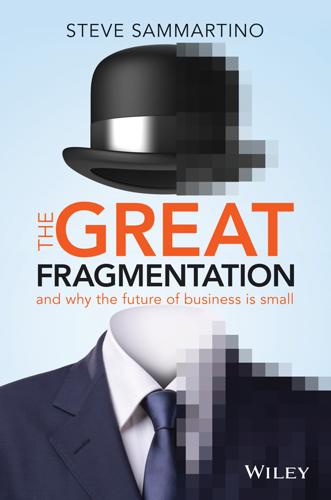
The Great Fragmentation: And Why the Future of All Business Is Small
by
Steve Sammartino
Published 25 Jun 2014
The great fragmentation Note Recommended books and documentaries Index Advert End User License Agreement List of Tables Chapter 6 Table 6.1: Chapter 19 Table 19.1: List of Illustrations Chapter 4 Figure 4.1 life in boxes Figure 4.2 a remote control Chapter 6 Figure 6.1 the behaviour of cities has evolved as people are self-organising themselves into groups around passions Chapter 8 Figure 8.1 photo of Vasilii Racovitsa Chapter 14 Figure 14.1 expectation and utility curve: a personal variation on Gartner’s hype cycle* Chapter 17 Figure 17.1 anyone can get into space Figure 17.2 the pitch tweet Figure 17.3 the hourglass launch strategy PREFACE Over the past 10 years I've been a keen observer of the business landscape. I had an inkling something was going on when I left corporate life for the first time in 2005.
…
But this doesn’t mean the predictions of what it may become were inaccurate. It was more a reflection of the diffusion of innovation rather than of it disappearing. Most disruptive innovations and technologies go through similar trajectories (see figure 14.1). Figure 14.1 expectation and utility curve: a personal variation on Gartner’s hype cycle (The underlying concept for this was conceived by Gartner, Inc.). The truth is we’re still hurtling towards a gamified future of commerce. We’re all still playing the games right now, but like many aspects of commerce, we go deep into the wormhole before we realise it. Gamification not only becomes possible in a connected and social world, it’s inevitable.

The Globotics Upheaval: Globalisation, Robotics and the Future of Work
by
Richard Baldwin
Published 10 Jan 2019
Gilder’s Law As with Gordon Moore, there is a strange parallel between George Gilder the man and the law he named after himself. In 1989, Glider predicted that data transmission rates would grow three times faster than computer power. This prediction went through a massive hype cycle—a bit like Gilder himself. The two stories are surprisingly intertwined. The technology breakthrough that triggered the hype cycle was the commercial viability of fiber optic cables. These promised vastly faster transmission rates. The innovation was oversold at first, largely by Gilder himself. This fostered overinflated expectations that became part of the “dot com” bubble of the late 1990s.
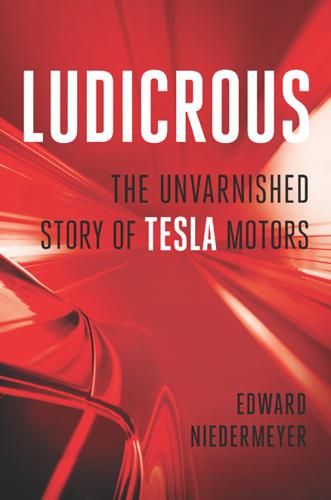
Ludicrous: The Unvarnished Story of Tesla Motors
by
Edward Niedermeyer
Published 14 Sep 2019
The challenge of self-driving car development was not simply convincing the public that a car could “drive itself,” which could theoretically be achieved with as little hardware as a brick placed on the accelerator, but by making a car drive itself safely. As this reality sank in, the rest of the autonomous-drive space dialed back expectations. In the summer of 2018, the research and advisory company Gartner released its latest “hype cycle” analysis, which showed that autonomous-drive technology had passed peak hype and was entering the “trough of disillusionment.” Increasingly, the entire goal of a Level 5 vehicle, capable of full autonomy anywhere, was being dismissed in favor of Level 4 vehicles, which operate fully autonomously but only in a limited “geofenced” area.
…
Valuewalk, August 17, 2015. https://www.valuewalk.com/2015/08/tesla-motors-morgan-stanley-raises-price-target/ 173the on-demand mobility market could be worth $2 trillion: Arjun Kharpal. “Tesla could be worth ‘multiples’ of current $50 billion market cap by 2020, fund manager says.” CNBC, May 19, 2017. https://www.cnbc.com/2017/05/19/tesla-stock-valuation-driverless-taxi.html 175Gartner released its latest “hype cycle” analysis: Mike Ramsey. “Autonomous Vehicles Fall Into the Trough of Disillusionment . . . But That’s Good.” Forbes, August 14, 2018. https://www.forbes.com/sites/enroute/2018/08/14/autonomous-vehicles-fall-into-the-trough-of-disillusionment-but-thats-good/#3b5a3c6e7b5a 176John Krafcik publicly admitted that autonomous vehicles might never work in all locations: Sam Abuelsamid.

Mood Machine: The Rise of Spotify and the Costs of the Perfect Playlist
by
Liz Pelly
Published 7 Jan 2025
“Next up, some songs that took over your life in 2022,” the generated voice announces. “Yeah, you’re going to recognize yourself in these.” Introduced in the winter of 2023, the new DJ function immediately seemed like nothing more than an eager attempt at capitalizing on the then-ongoing generative AI hype cycle. But it was also something the company had been working on for many years, an elusive vision they’d long been after: one where the Spotify user could simply open the app, press “play,” and instantaneously get the perfect soundtrack for any given moment or context, without having to search, click, or think.
…
I heard more men than I could count utter some version of this at various tables: “Sounds cool, man. I’m working on something similar. What are you training on?” If there was any running theme from table to table, it seemed to just be rich people looking for new ways to get more rich, with little regard for the impact they might have on working musicians. * * * The AI hype cycle could be disorienting to keep up with. As it unfolded, the very term “AI” felt increasingly useless, especially in music, where so many different concepts fall under its umbrella, and so many pre-existing products were being rebranded as AI for metallic tech-forward sheen. Every day, a press release for some new AI start-up landed in my inbox, selling some new song-starter tool or metadata management service or predictive A&R thing.

Architects of Intelligence
by
Martin Ford
Published 16 Nov 2018
DAPHNE KOLLER: I think it’s important to recognize that we never said this is going to put universities out of business. There were other people who said that, but we never endorsed that and we didn’t think it was a good idea. In some ways, the typical Gartner hype cycle of MOOCs was compressed. People made these extreme comments, in 2012 it was, “MOOCs are going to put universities out of business,” then 12 months later it was “universities are still here, so obviously MOOCs have failed.” Both of those comments are ridiculous extremes of the hype cycle. I think that we actually have done a lot for people who don’t normally have access to that level of education. About 25% of Coursera learners don’t have degrees, and about 40% of Coursera learners are in developing economies.
…
How seriously do you take that, and is it something we should worry about? China does have a different system, a more authoritarian system, and a much bigger population which means more data to train algorithms on and less restrictions regarding privacy and so forth. Are we at risk of falling behind in AI leadership? FEI-FEI LI: Right now, we’re living in a major hype-cycle of modern physics and how that can transform technology, whether it’s nuclear technology, or electrical technology. One hundred years later, will we ask ourselves the question: which person owned modern physics? Will we try to name the company or country that owned modern physics and everything after the industrial revolution?

Surviving AI: The Promise and Peril of Artificial Intelligence
by
Calum Chace
Published 28 Jul 2015
Those technologies which do cross the chasm are then adopted by the “early majority”, then the “late majority”, and finally by the “laggards”. But by the time the early majority is getting on board the hype is already ancient history, and people are already taking for granted the improvement to their lives. The hype cycle has run its course. The hedonic treadmill is a name for the fact that most people have a fairly constant level of happiness (hedonic level), and that when something significant in our life changes – for good or bad – we quickly adjust and return to our previous level. When we look ahead to an anticipated event we often believe that it will change our lives permanently, and that we will feel happier – or less happy – forever afterwards.
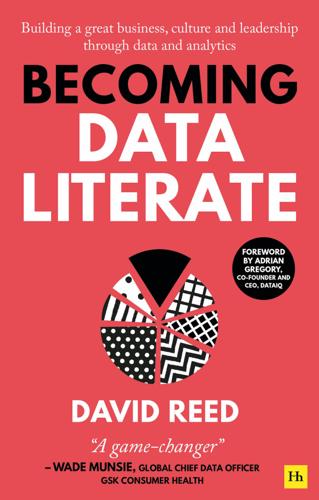
Becoming Data Literate: Building a great business, culture and leadership through data and analytics
by
David Reed
Published 31 Aug 2021
This can be a strong basis on which to push for growth, arguing for additional investment to drive leading-edge projects such as AI, ML and automation. But this does require careful political handling to position data as the enabler, rather than the legacy of a failed previous business leader. Momentum can act in two competing ways – as a forward force or as resistance. The business world has experienced multiple hype cycles around data and analytics, especially since the explosion of interest in big data as a theme from 2012 onwards. The main cycle of the current decade is defined by AI and ML. The challenge for data leaders is to use these waves of hype to pull along foundational projects or to close out activities that have been lagging behind.
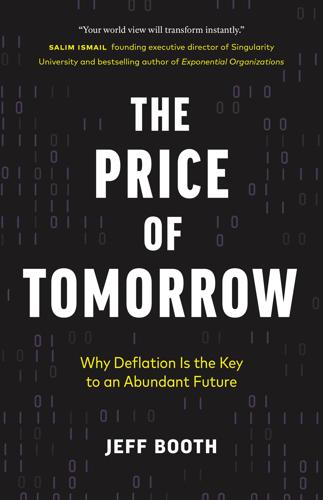
The Price of Tomorrow: Why Deflation Is the Key to an Abundant Future
by
Jeff Booth
Published 14 Jan 2020
Additive manufacturing and 3D printing To the general population, the promise of anything we want printed right before our eyes vanished with the first wave of 3D printers that only printed crude versions of knickknacks. That image, of a printer slowly layering plastic into a rudimentary product, has been etched into our minds because the reality was so far away from the promise. Many of us, me included, dismissed a world where anything could be printed in our living rooms as a faraway dream, and the hype cycle of additive manufacturing ended. But it was really only starting. The relentless march of technology innovation continued, and today the state of additive manufacturing is vastly different. Now commercially viable for a wide range of applications, the industry is moving fast, having surpassed $7.3 billion in 2017, according to Wohlers Associates.26 Although not yet seen by the public commercially, it is just starting to reach a tipping point.

Futureproof: 9 Rules for Humans in the Age of Automation
by
Kevin Roose
Published 9 Mar 2021
I met with start-up founders and engineers in Silicon Valley who showed me how new advances in fields like deep learning were helping them build all kinds of world-improving tools: algorithms that could increase farmers’ crop yields, software that would help hospitals run more efficiently, self-driving cars that could shuttle us around while we took naps and watched Netflix. This was the euphoric peak of the AI hype cycle, a time when all of the American tech giants—Google, Facebook, Apple, Amazon, Microsoft—were pouring billions of dollars into developing new AI products and shoving machine learning algorithms into as many of their apps as possible. They wrote blank checks to their AI research teams, and poached professors and grad students out of top computer science departments with frankly hilarious job offers.
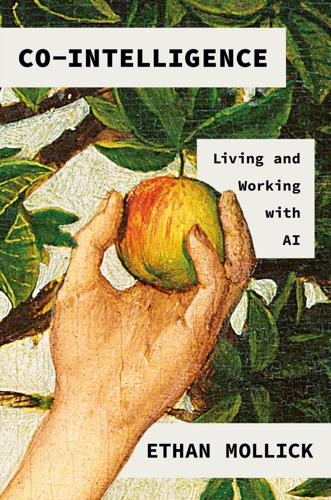
Co-Intelligence: Living and Working With AI
by
Ethan Mollick
Published 2 Apr 2024
Theories alone were not enough, and a handful of early computer scientists started working on programs that pushed the boundaries of what was soon called artificial intelligence, a term invented in 1956 by John McCarthy of MIT. Progress was initially rapid as computers were programmed to solve logic problems and play checkers—leading researchers expected an AI to beat grandmasters in chess within a decade. But hype cycles have always plagued AI, and as these promises went unfulfilled, disillusionment set in, one of many “AI winters” in which AI progress stalls and funding dries up. Other boom-and-bust cycles followed, each boom accompanied by major technological advances, such as artificial neural networks that mimicked the human brain, followed by collapse as AI could not deliver on expected goals.
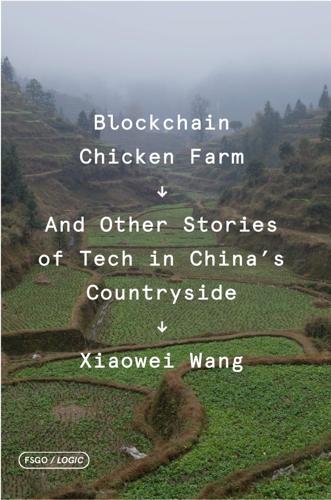
Blockchain Chicken Farm: And Other Stories of Tech in China's Countryside
by
Xiaowei Wang
Published 12 Oct 2020
Projects like the failed One Laptop per Child, by Nicholas Negroponte, or the Hole in the Wall project exude this techno-optimistic belief—if you can give a laptop to a child or put a computer in an Indian slum, children will teach themselves linear algebra and become the next Bill Gates. We now know this is a myth inflated by a hype cycle. A whole support system of teachers, peers, and family is a stronger influence than a laptop or computer screen. But part of me—the American part of me—wants to believe the narrative about individualistic passion overcoming everything, including a lack of formal schooling or connections. Sun Wei grins at my question and gives me a pitying look.
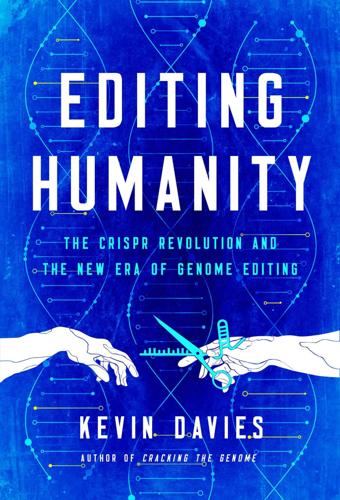
Editing Humanity: The CRISPR Revolution and the New Era of Genome Editing
by
Kevin Davies
Published 5 Oct 2020
As one gene therapy expert said: “We underestimated the fact that it took billions of years for the viruses to learn to live in us—and we were hoping to do it in a five-year grant cycle.”31 There was also the complication of our immune system, which is designed to combat foreign agents such as viruses. The human body isn’t going to automatically give billions of recombinant viruses a pass just because they mean well. It has been a long haul back to respectability and success for gene augmentation therapy. The roller-coaster ride follows the Gartner Hype Cycle: the inflated expectations of the 1990s, the trough—or abyss—of disillusionment at the turn of the century; followed by the slope of enlightenment. What’s been holding up the field is not a lack of suitable targets—we have an encyclopedic catalogue of thousands of eligible Mendelian genetic diseases—but the capability of delivering the therapeutic gene safely and effectively.
…
See also In vitro fertilization Embryo implantation, 339 Embryonic stem cells, 107, 355 “End of the Beginning, The,” 128–129 Endangered species, xii, 6, 264, 285–288 Engelhardt, Vladimir, 108 “Engineering on the Brain,” 85 Epigenetics, 109, 322 ERS Genomics, 170 Esrick, Erica, 157 Esvelt, Kevin, 79, 87, 290–293, 295–299, 324 Etienne, Brunel, Jr., 158 Eugenics and Health Protection Law, 267 Eugenics Education Society, 341 European Patent Office (EPO), 184, 189 Evans, John, 330, 359, 360 Evans, Martin, 98, 107 Evolution hierarchical evolution, 207 microbial evolution, 38 natural evolution, 29 views on, 15, 291 volitional evolution, 337–360 Exonics, 175–177 Extinction, 6, 279, 283–288 “Extraordinary Guangdong,” 265 Extraordinary Measures, 163 F Face transplant, 360 Facial features, 357 Fan, Christina, 208 Fantastic Voyage, 4 Farm aid, 301–320 Fauci, Anthony, 96 Feinstein, Dianne, 258 Felipe II, King, 30 Ferny Fertility Clinic, 340 Ferrell, Ryan, 193, 195, 197–203, 211, 228, 230, 239–240, 257 Fire, Andy, 50 Firestein, Stuart, 72 Fischer, Alain, 111–112, 144, 146, 161 Fleay, David, 286 Fleming, Alexander, 7, 92 Flies, 298–299 Flotte, Terry, 164 Fonfara, Ines, 64 Fong, Mei, 268, 275 Food and Drug Administration (FDA), 119, 122, 144, 150–151, 155, 159–162, 165, 212–214, 239, 258, 264, 267, 273, 315–317, 345, 363–365 Forbes, 89 Ford, Harrison, 163 Forever Fix, The, 147 Foy, Shaun, 170 Francis, Pope, 13–14 Francis Crick Institute, 222, 234 Frangoul, Haydar, 170 Franklin, Rosalind, 7, 47, 60, 92, 110, 123, 125, 126, 132 Fraser, Brendan, 163 Fraser, Claire, 32 Fremaux, Christophe, 44 Friedmann, Theodore (Ted), 135, 140–141, 146 Frost, Lucy, 162 Fu, Ying-Hui, 346 Fungus, 67, 287, 311–312 FUT2, 343–344 “Future, Human, Nature: Reading, Writing, Revolution,” 221 “Future of Man, The,” 132 G Gabriel, Meabh, 13 Gabriel, Peter, 13 Gabriel, Stacey, 94 Gaiman, Neil, 1 Game of Thrones, 244, 346 Gantz, Valentino, 293 Gao, Guangping, 145 Gartner Hype Cycle, 144–145 Gasiunas, Giedrius, 69 Gates, Bill, 97, 171, 293, 299–300, 353 Gates, Henry “Skip,” 353 Gates Foundation, 158, 293 Gattaca, 355 Gaudelli, Nicole, 325–326, 328–329, 331 Geisinger healthcare, 230 Gelsinger, Jesse, 112, 141–144, 146, 149, 159, 164, 227, 259, 267, 293 Gelsinger, Paul, 141–144, 164 GenBank, 35 Gendaq, 110 Gene, The (book), xi, xviii, 143 Gene, The (documentary), xi, 144, 354–355 Gene mapping, xiii–xiv, 15–18, 91, 123, 138, 348 Gene Sequencing Center, 209 Gene surgery, 25, 199, 204, 247 Gene therapy beginnings of, xi, xvi, 135–138 challenges with, 141–178 cost of, 159–161 father of, 151 germline and, 254, 359–360 problems with, 141–145 retinal gene therapy, 148–151 stem cells and, 119, 136, 144, 181 trials, 111–112, 116, 133–151, 159, 253 “Gene Therapy for Genetic Disease?
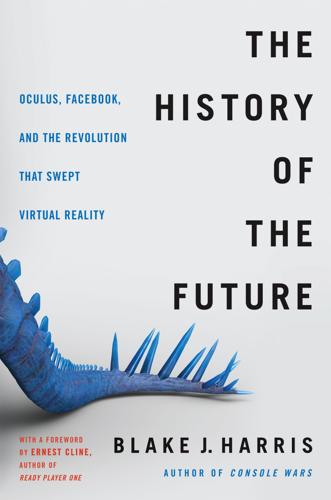
The History of the Future: Oculus, Facebook, and the Revolution That Swept Virtual Reality
by
Blake J. Harris
Published 19 Feb 2019
And even if you were lucky enough to make that list, the devkits themselves were usually incredibly expensive1—for example, early devkits for Sony’s PlayStation 3 sold for nearly $20,0002. So what Iribe was proposing was uncommon in the gaming space. But it actually made a whole lot of sense, as both a way to tap into the booming indie development space, and also a way to try and spare Oculus from the hype cycles that have plagued VR headsets of the past. Because, at least in rhetoric, what they’d be selling wasn’t a headset. It was a devkit—just a devkit. That would keep user expectations low and also buy Oculus time to ramp up to a consumer product. “I love it,” Mitchell told Iribe. “We should totally do devkits.”
…
In response to this wonderful news, fans freak out about the possibilities. Excitement builds—Anything? Anything!—until one of the megafans finally gets his hands on the game, installs it, and is greeted by this message: WELCOME TO THE TUTORIAL . . . YOU CAN’T DO ANYTHING. Mitchell laughed. “Yeah, that pretty much sums up the hype cycle for every game.” “But we can’t do that,” Luckey said. “I don’t want to do that. Not just because it’s a shitty thing to do, but because that would be bad for VR.” This was not the first time Mitchell had heard Luckey make a comment like this—about something being “good” or “bad” for virtual reality—and he found it utterly charming.

Makers
by
Chris Anderson
Published 1 Oct 2012
Everybody speaks the same language of digital manufacturing. It’s as simple as that. It just took common platforms to make the dream of hyperefficient B2B online marketplaces a reality. This is the way all successful technological revolutions work. The Gartner Group describes this boom-bust-boom trajectory as the “Hype Cycle” of tech-driven change. After the “Peak of Inflated Expectations,” there is the “Trough of Disillusionment.” Then comes the “Slope of Enlightenment,” and finally the “Plateau of Productivity.” We’ve been through the first three already. Now we’re enjoying the last. By the time a business process is too boring to comment on, it’s probably starting to actually work.

The Economic Singularity: Artificial Intelligence and the Death of Capitalism
by
Calum Chace
Published 17 Jul 2016
[clx] http://www.ft.com/cms/s/0/b33d75fe-cc5a-11e5-be0b-b7ece4e953a0.html#axzz3znOxP8QH [clxi] http://www.kitguru.net/peripherals/anton-shilov/gartner-two-million-vr-headsets-to-be-sold-in-2016/ [clxii] http://www.digi-capital.com/news/2015/04/augmentedvirtual-reality-to-hit-150-billion-disrupting-mobile-by-2020/#.VoV65vmLRD8 [clxiii] http://uk.businessinsider.com/virtual-reality-on-gartner-hype-cycle-2015-8 [clxiv] http://techcrunch.com/2016/01/30/how-the-growth-of-mixed-reality-will-change-communication-collaboration-and-the-future-of-the-workplace/ [clxv] The games industry is much bigger than Hollywood if you stop measuring move income at the box office. If you add in DVD and other “windows”, plus merchandising, it is hard to say. https://www.quora.com/Who-makes-more-money-Hollywood-or-the-video-game-industry [clxvi] https://versions.killscreen.com/we-should-be-talking-about-torture-in-vr/ [clxvii] http://www.tomdispatch.com/post/175822/tomgram%3A_crump_and_harwood%2C_the_net_closes_around_us/ [clxviii] https://www.washingtonpost.com/local/public-safety/the-new-way-police-are-surveilling-you-calculating-your-threat-score/2016/01/10/e42bccac-8e15-11e5-baf4-bdf37355da0c_story.html [clxix] http://www.newyorker.com/tech/elements/little-brother-is-watching-you [clxx] http://www.wired.com/2014/03/going-tracked-heres-way-embrace-surveillance/ [clxxi] https://www.washingtonpost.com/news/the-switch/wp/2016/03/28/mass-surveillance-silences-minority-opinions-according-to-study/ [clxxii] http://www.bbc.co.uk/news/world-asia-china-34592186 [clxxiii] http://www.computerworld.com/article/2990203/security/aclu-orwellian-citizen-score-chinas-credit-score-system-is-a-warning-for-americans.html [clxxiv] http://www.theguardian.com/technology/2015/oct/06/peeple-ratings-app-removes-contentious-features-boring [clxxv] https://www.technologyreview.com/s/601294/microsoft-and-google-want-to-let-artificial-intelligence-loose-on-our-most-private-data/?

Devil's Bargain: Steve Bannon, Donald Trump, and the Storming of the Presidency
by
Joshua Green
Published 17 Jul 2017
“While I’m not at this time a candidate for the presidency,” Trump announced grandly at CPAC, “I will decide by June whether or not I will become one.” Reporters soon realized that his announcement timeline just happened to coincide with sweeps week and dismissed it as a ratings stunt, the usual Trump-presidential-hype cycle cranking up again. That’s why it didn’t register as particularly significant when Trump, in the same speech, deployed a curious line of attack against Obama, one previously confined mostly to the fever swamps of far-right websites. “Our current president came out of nowhere. Came out of nowhere,” Trump said, shaking his head.
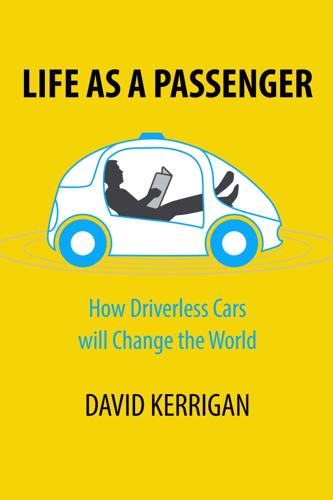
Life as a Passenger: How Driverless Cars Will Change the World
by
David Kerrigan
Published 18 Jun 2017
While there is much optimism around the future potential benefits of self-driving cars, there’s a mixture of uncertainty, pessimism and even fear around the timing of the transition. Sceptics compare driverless car technology with Zeno’s dichotomy paradox:[6] every leap will take us halfway to our destination without ever reaching it. Some pundits believe we are nearing the infamous “Peak of Inflated Expectations” in the Gartner Hype Cycle (see below), and a long let-down is ahead before the technology eventually meets our expectations. I believe we are entering a foreseeable phase of negativity for driverless cars as people look beyond their initial allure, identify the problems and then set about proposing and implementing solutions for these problems, both real and imagined.
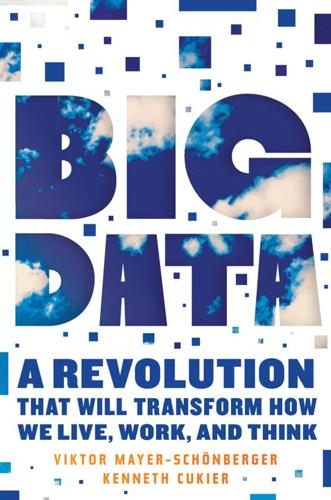
Big Data: A Revolution That Will Transform How We Live, Work, and Think
by
Viktor Mayer-Schonberger
and
Kenneth Cukier
Published 5 Mar 2013
This overturns centuries of established practices and challenges our most basic understanding of how to make decisions and comprehend reality. Big data marks the beginning of a major transformation. Like so many new technologies, big data will surely become a victim of Silicon Valley’s notorious hype cycle: after being feted on the cover of magazines and at industry conferences, the trend will be dismissed and many of the data-smitten startups will flounder. But both the infatuation and the damnation profoundly misunderstand the importance of what is taking place. Just as the telescope enabled us to comprehend the universe and the microscope allowed us to understand germs, the new techniques for collecting and analyzing huge bodies of data will help us make sense of our world in ways we are just starting to appreciate.

Rule of the Robots: How Artificial Intelligence Will Transform Everything
by
Martin Ford
Published 13 Sep 2021
This explains, for example, why progress toward fully autonomous self-driving cars has not lived up to some of the more exuberant early predictions. As these limitations came into focus toward the end of the decade, there was a gnawing fear that the field had once again gotten over its skis and that the hype cycle had driven expectations to unrealistic levels. In the tech media and on social media, one of the most terrifying phrases in the field of artificial intelligence—“AI winter”—was making a reappearance. In a January 2020 interview with the BBC, Yoshua Bengio said that “AI’s abilities were somewhat overhyped… by certain companies with an interest in doing so.”14 A large share of this concern came to bear on the industry that was, as we saw in Chapter 3, at the absolute summit of all the accumulated hype: self-driving cars.

The Thinking Machine: Jensen Huang, Nvidia, and the World's Most Coveted Microchip
by
Stephen Witt
Published 8 Apr 2025
But I also know that he loves me.” As the launch date neared, Catanzaro privately worried that his boss was falling into an age-old trap. If there was one field that had a worse performance record than parallel computing, it was AI. Going back to the 1950s, AI technology had gone through repeated hype cycles that ended with embarrassing busts. Catanzaro, like all researchers in the field, was keenly aware of AI’s traumatic past encounters with commerce, and he worried that AI was preparing to disappoint investors once again. But he said nothing to Huang—the opportunity he’d been offered was just too good.
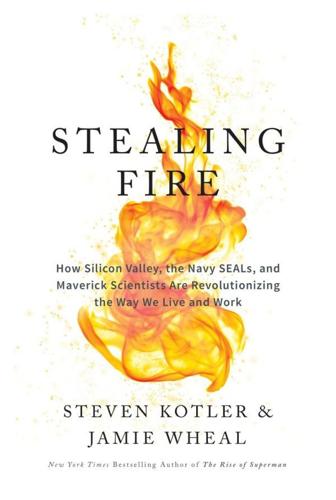
Stealing Fire: How Silicon Valley, the Navy SEALs, and Maverick Scientists Are Revolutionizing the Way We Live and Work
by
Steven Kotler
and
Jamie Wheal
Published 21 Feb 2017
And, for what it’s worth, we believe there is a comparable, though far less sensational risk to living a suburban life of quiet desperation and dying prematurely of a lifestyle disease without having once tasted what these athletes always live (and only sometimes die) for. Overhyped Sensor Tech: In several places, we highlight the accelerating potential of smart sensors and wearables to give us more feedback on our bodies and brains. In the past few years, the hype cycle has claimed several high-profile victims as the Federal Trade Commission, Food and Drug Administration, and class-action suits have clamped down on Nike, Apple, and Lumosity for claiming benefits or accuracy they could not deliver. In our research, we generally break down wearable tech into three buckets.
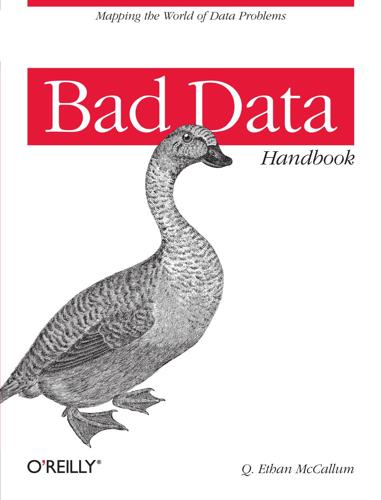
Bad Data Handbook
by
Q. Ethan McCallum
Published 14 Nov 2012
.; Page, L. 1998. “The anatomy of a large-scale hypertextual Web search engine.” Computer Networks and ISDN Systems 30: 107–117 Chapter 14. Myths of Cloud Computing Steve Francia Myths are an important and natural part of the emergence of any new technology, product, or idea as identified by the hype cycle. Like any myth, technology myths originate in a variety of ways, each revealing intriguing aspects of the human psyche. Some myths come from early adopters, whose naive excitement and need to defend their higher risk decision introduce hopeful, yet mistaken myths. Others come from vendors who, with eagerness, over-promise to their customers.

How Music Got Free: The End of an Industry, the Turn of the Century, and the Patient Zero of Piracy
by
Stephen Witt
Published 15 Jun 2015
Pitchfork, Rolling Stone, and even The New Yorker all called it one of 2006’s best releases—establishment accolades that would have been unthinkable for Wayne just two or three years earlier. By leaking his own stuff first, Wayne had rebooted his career. As Jay-Z and Eminem were complaining about the leakers, Wayne was embracing them. Better than any artist before him, he leveraged the Internet hype cycle to his own advantage. His boast of “best rapper alive” started to get taken seriously. But the mp3 revolution was not yet complete: the 2005 model iPod, at $300 retail, was still a luxury good, and most of Wayne’s younger urban fan base couldn’t afford it. They were still in the compact disc era, and Drama was serving them by producing and distributing the mix CDs wholesale on dedicated burners in his Atlanta offices.

Possible Minds: Twenty-Five Ways of Looking at AI
by
John Brockman
Published 19 Feb 2019
That’s one of the reasons that understanding does not obey Moore’s Law: Knowledge is acquired by formulating explanations and testing them against reality, not by running an algorithm faster and faster. Devouring the information on the Internet will not confer omniscience either: Big Data is still finite data, and the universe of knowledge is infinite. A third reason to be skeptical of a sudden AI takeover is that it takes too seriously the inflationary phase in the AI hype cycle in which we are living today. Despite the progress in machine learning, particularly multilayered artificial neural networks, current AI systems are nowhere near achieving general intelligence (if that concept is even coherent). Instead, they are restricted to problems that consist of mapping well-defined inputs to well-defined outputs in domains where gargantuan training sets are available, in which the metric for success is immediate and precise, in which the environment doesn’t change, and in which no stepwise, hierarchical, or abstract reasoning is necessary.
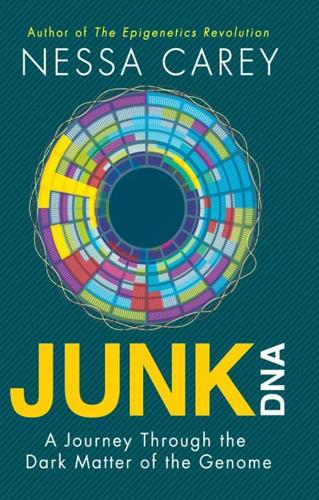
Junk DNA: A Journey Through the Dark Matter of the Genome
by
Nessa Carey
Published 5 Mar 2015
The same amount of money could have funded at least 600 average-sized single research grants focusing on investigation of individual hypotheses. Choosing how to distribute funding is a balancing act, and at these levels of funding it is guaranteed to create division and concern. A company called Gartner created a graphic that shows how new technologies are perceived. It is known as the Hype Cycle. At first everyone is very excited – ‘the peak of inflated expectations’. When the new tech fails to transform everything about your life there is a crash leading to the ‘trough of disillusionment’. Eventually, everyone settles down, there is a steady growth in rational understanding and finally a productive plateau is reached.

Hype: How Scammers, Grifters, and Con Artists Are Taking Over the Internet―and Why We're Following
by
Gabrielle Bluestone
Published 5 Apr 2021
But by filtering his scam through a network of trusted influencers on social media, which caught the attention of legacy news outlets more than happy to cover things superficially from an entertainment angle, McFarland had been able to wash the stench of fraud from his scheme, resulting in a pure hype cycle that bypassed any need for proof of concept. And with a millennial army willing to follow these influential generals from the screen to the literal ends of the earth, McFarland was able to convince a series of experienced investors to keep funding the scam—at least until it all fell apart in real time, where else, but on social media.

We Are Electric: Inside the 200-Year Hunt for Our Body's Bioelectric Code, and What the Future Holds
by
Sally Adee
Published 27 Feb 2023
(Part of that story concerns a patenting misfire.) Nobody has rice-sized implants routing their nervous signals around the body. Galvani Biosciences is still plugging away, but with replication results that don’t make any headlines. Now, part of this is just the inevitable rollercoaster of the hype cycle. First, you get a big splashy announcement of a new possibility and everyone is very excited. Then the grind of basic research sets in, and there’s a long trough of disillusionment because the new hot devices aren’t ready immediately. Eventually, positive results start to emerge from the long tail of clinical research, and slowly the once-hyped revolution is integrated into routine care at your doctor’s office, and fades into the background of everyday life.
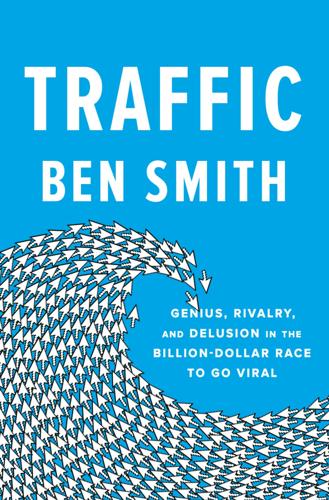
Traffic: Genius, Rivalry, and Delusion in the Billion-Dollar Race to Go Viral
by
Ben Smith
Published 2 May 2023
It went unsaid that they’d be an obvious buyer of BuzzFeed one day—the VCs could, we assumed, check that out with Zuckerberg. How news reporting fit into the picture was a little hazy, but—Valleywag aside—it was still an era when journalists turned investors like Andreessen into heroes, and one of Andreessen Horowitz’s strengths was its mastery of the hype cycle. I got the sense that the investors believed—though it was never formally stated—that BuzzFeed would be one more friendly platform for founders. Because Andreessen was a man of big bets, he made this one. His firm led an investment round of $50 million that August, valuing BuzzFeed at $850 million and bragging in a press release that the company was already profitable.
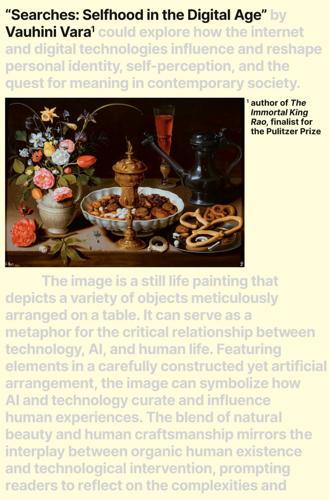
Searches: Selfhood in the Digital Age
by
Vauhini Vara
Published 8 Apr 2025
The Journal prided itself on comforting the afflicted and afflicting the comfortable—not long before I started there, its reporter Jonathan Weil had published the first article raising questions about accounting practices at Enron—but its editors and reporters, myself included, still tended to judge the importance of corporations based on their market value and the popularity of their products. There was a circularity in this logic; we wrote mostly about big companies, which fed the hype cycle that made them even bigger, which led us to write about them even more. For each scoop exposing executive misbehavior, of which the Journal published plenty, there were tens or hundreds of articles covering product launches or corporate earnings. The kind of writing I wanted to pursue in graduate school felt different.

Human Frontiers: The Future of Big Ideas in an Age of Small Thinking
by
Michael Bhaskar
Published 2 Nov 2021
Gene editing is ready to change the world, but a combination of over-regulation in some territories, patent wars and scientific nationalism weighs down on the field. Meanwhile VR has been around for years, but to date no one has found a fit between the product and its market. Perhaps it stands poised to launch a bright multiverse of possibility; perhaps most of us are content with TV. Major tools are subject to a vicious, recurring hype cycle. And does the financialised and post-Covid world have the stomach for breakthroughs’ ever-increasing cost? To date the US government has spent billions on the National Ignition Facility, a laser research institute, at Lawrence Livermore National Laboratory with, in the words of one commentator, ‘no tangible results in sight’.61 The public and government appetite for such expenditures, epitomised by CERN's new $27 billion particle accelerator, is shaky.
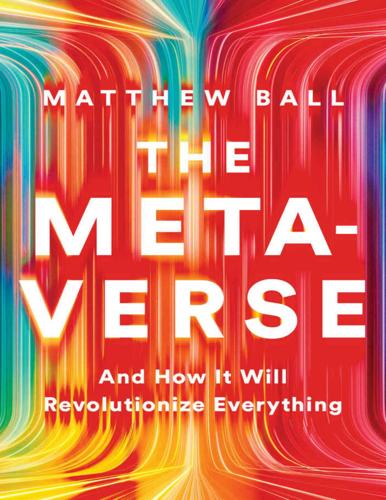
The Metaverse: And How It Will Revolutionize Everything
by
Matthew Ball
Published 18 Jul 2022
By the end of the decade, we’ll agree the Metaverse has arrived* and it will be worth many trillions. The question of exactly when it started and how much revenue it generates will remain uncertain. Before getting to that point, we will exit the current phase of hype and probably enter and then exit another one, too. The hype cycle will be caused by at least three factors: the reality that many companies will over-promise what sort of Metaverse experiences will be possible and when; the difficulty of overcoming key technical barriers; and the fact that, even when those barriers are overcome, it will take time to figure out exactly what companies should build “in the Metaverse.”

Dawn of the New Everything: Encounters With Reality and Virtual Reality
by
Jaron Lanier
Published 21 Nov 2017
Sherlock Holmes has been known to use them as well, at least in his Cumberbatch incarnation. 7. Conspicuously underrepresented in this list of VR apps is help for clients with disabilities. We actually did a lot with gloves for sign language, therapy for aphasia patients, and so on, but I have grown tired of the PR hype cycle around VR and disabilities, so lately I prefer to just act and not talk so much about it. The hype comes so easily, like a drug, that it can actually be an impediment to funders and organizations following through well enough to make a difference. 8. As long as I’m mentioning Randy, I have to also mention his PhD adviser, Andy van Dam.

Machines of Loving Grace: The Quest for Common Ground Between Humans and Robots
by
John Markoff
Published 24 Aug 2015
He did, however, remain a staunch critic of the basic idea of software agents, and pointed out that aircraft cockpit designers had for decades tried and failed to use speech recognition to control airplanes. When Siri was introduced in 2010, the “Internet of Things” was approaching the peak in the hype cycle. This had originally been Xerox PARC’s next big idea after personal computing. In the late 1980s PARC computer scientist Mark Weiser had predicted that as microprocessor cost, size, and power collapsed, it would be possible to discreetly integrate computer intelligence into everyday objects. He called this “UbiComp” or ubiquitous computing.

The Future of Technology
by
Tom Standage
Published 31 Aug 2005
At the time the index was announced, every company in it got a boost, but six months later share prices were down by a quarter. The same thing happened to the shares in a nanotechnology index launched by Punk Ziegel, another investment bank. At kpcb, Mr Khosla is worried about indices. “When companies like Merrill Lynch start having a nanotechnology index, I think that is getting into the hype cycle for which a lot of people got into a lot of trouble during the internet bubble.” When people start getting interested, he says, fund managers decide that some proportion of their investment should be in nanotechnology. A bubble gets going when everybody starts piling in, trying to buy stocks that do not exist, he adds.

The Long History of the Future: Why Tomorrow's Technology Still Isn't Here
by
Nicole Kobie
Published 3 Jul 2024
We’ve seen AI go through a seasonal cadence of summer and winter, hype followed by backlash, then quiet, real progress before the loop begins again. Is this the point where the hype crash happens again? Perhaps, but hopefully not. Instead, it’d be preferable for AI to break out of this cycle and start to be truly useful, with a careful, close eye on the downsides. Let’s ditch the historical hype cycle and build AI into a useful tool for people. Over the last several decades, we’ve refused to admit AI is narrow, when it is. Even before it could be built, we debated whether it could overtake human intelligence. And before we managed to put it to work, we shuddered over job losses. We should worry about existential threats and societal disruption, of course.

More Everything Forever: AI Overlords, Space Empires, and Silicon Valley's Crusade to Control the Fate of Humanity
by
Adam Becker
Published 14 Jun 2025
There have been AI booms—like the one that exploded into public consciousness in 2022, powered by large language models (LLMs)—and, to date, they have all been followed by “AI winters,” when progress slows and the state of the art stagnates for years or decades until the next breakthrough. And Brooks thinks winter is coming. “[LLMs] are following a well worn hype cycle that we have seen again, and again, during the 60+ year history of AI,” he wrote in 2024. “Get your thick coats now. There may be yet another AI winter, and perhaps even a full scale tech winter, just around the corner. And it is going to be cold.”106 All of this uncertainty reflects the fact that we just don’t know what it will take to build a machine that can do all the things a human can do.
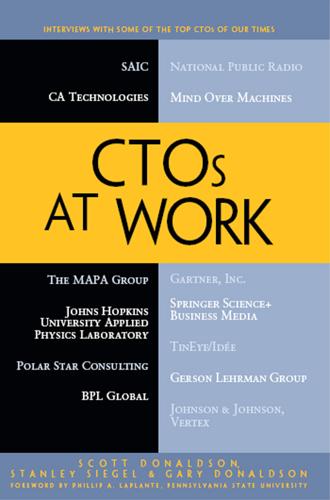
CTOs at Work
by
Scott Donaldson
,
Stanley Siegel
and
Gary Donaldson
Published 13 Jan 2012
Siegel: Okay, let's shift gears. Are there any big technology projects on the horizon now? Alving: One area of focus is on the cloud. When we look at the transformation that's taking place in cloud, we recognize there's a lot of hype. People have been talking about cloud for a couple of years now, and it's gone through its hype cycle and it sort of remains all things to all people. Then people say, “Wait, does it really mean anything to me?” There's no doubt the cloud is coming, for all the reasons that people talk about, including the financial imperative, because it's part of the solution to the budget issues that people are facing: we need a different paradigm for who owns, who operates, and who uses IT, and that's what the cloud offers.
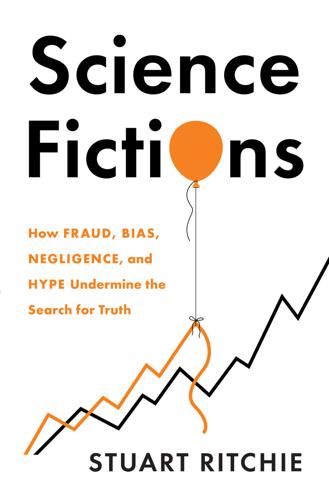
Science Fictions: How Fraud, Bias, Negligence, and Hype Undermine the Search for Truth
by
Stuart Ritchie
Published 20 Jul 2020
* * * At any given time, there’s usually an ‘emerging’ field that’s subject to the worst hype. Typically, a few publications with easy-to-grasp results in big-name journals get picked up by the media, public interest intensifies, and scientists in the field develop a kind of recklessness, feeding the hype cycle with careless and overblown statements. Then big claims fail to replicate in later experiments, the furore dies away and normal science resumes. Ultra-hyped fields include stem cells, genetics, epigenetics, machine learning and brain imaging; for the past few years, a strong contender for the ‘most hyped’ award has been research on the microbiome – the countless millions of microbes that inhabit our bodies.71 Thanks to the hype, the microbiome has been targeted by a plethora of products and treatments.

The Rise and Fall of Nations: Forces of Change in the Post-Crisis World
by
Ruchir Sharma
Published 5 Jun 2016
Meanwhile, Turkey’s per capita income would triple over the course of the decade, making it the world’s tenth-fastest-growing economy in the 2000s. Elie Wiesel, the writer and Holocaust survivor, said the opposite of love is not hate; it is indifference. This observation applies well to understanding the hype cycle. The question to ask of any country: How is it portrayed by the global media? The longer an economic boom lasts, the more credible a country’s track record appears to the media and the more warmly they embrace it as the economy of the future. The more this love deepens, the more alarmed I get. As we have seen, long runs of sustained growth are rare.

The Singularity Is Near: When Humans Transcend Biology
by
Ray Kurzweil
Published 14 Jul 2005
—RODNEY BROOKS, DIRECTOR OF THE MIT AI LAB161 I still run into people who claim that artificial intelligence withered in the 1980s, an argument that is comparable to insisting that the Internet died in the dot-com bust of the early 2000s.162 The bandwidth and price-performance of Internet technologies, the number of nodes (servers), and the dollar volume of e-commerce all accelerated smoothly through the boom as well as the bust and the period since. The same has been true for AI. The technology hype cycle for a paradigm shift—railroads, AI, Internet, telecommunications, possibly now nanotechnology—typically starts with a period of unrealistic expectations based on a lack of understanding of all the enabling factors required. Although utilization of the new paradigm does increase exponentially, early growth is slow until the knee of the exponential-growth curve is realized.

Artificial Intelligence: A Modern Approach
by
Stuart Russell
and
Peter Norvig
Published 14 Jul 2019
It was the first machine capable of universal computation. Babbage’s colleague Ada Lovelace, daughter of the poet Lord Byron, understood its potential, describing it as “a thinking or ... a reasoning machine,” one capable of reasoning about “all subjects in the universe” (Lovelace, 1843). She also anticipated AI’s hype cycles, writing, “It is desirable to guard against the possibility of exaggerated ideas that might arise as to the powers of the Analytical Engine.” Unfortunately, Babbage’s machines and Lovelace’s ideas were largely forgotten. AI also owes a debt to the software side of computer science, which has supplied the operating systems, programming languages, and tools needed to write modern programs (and papers about them).